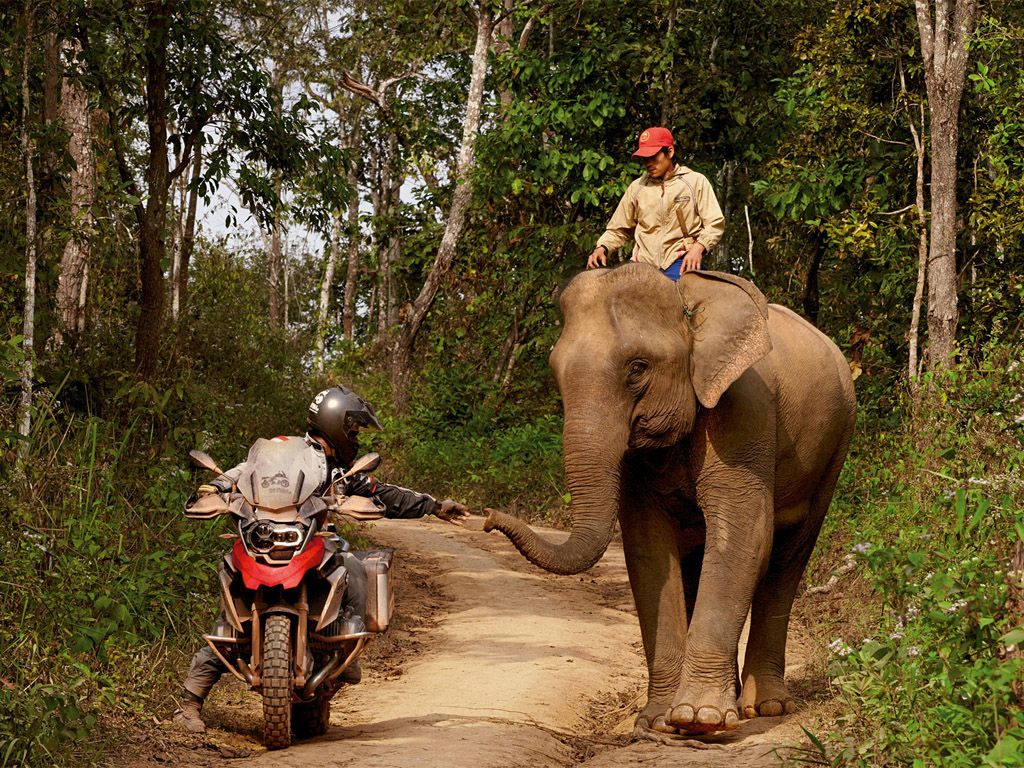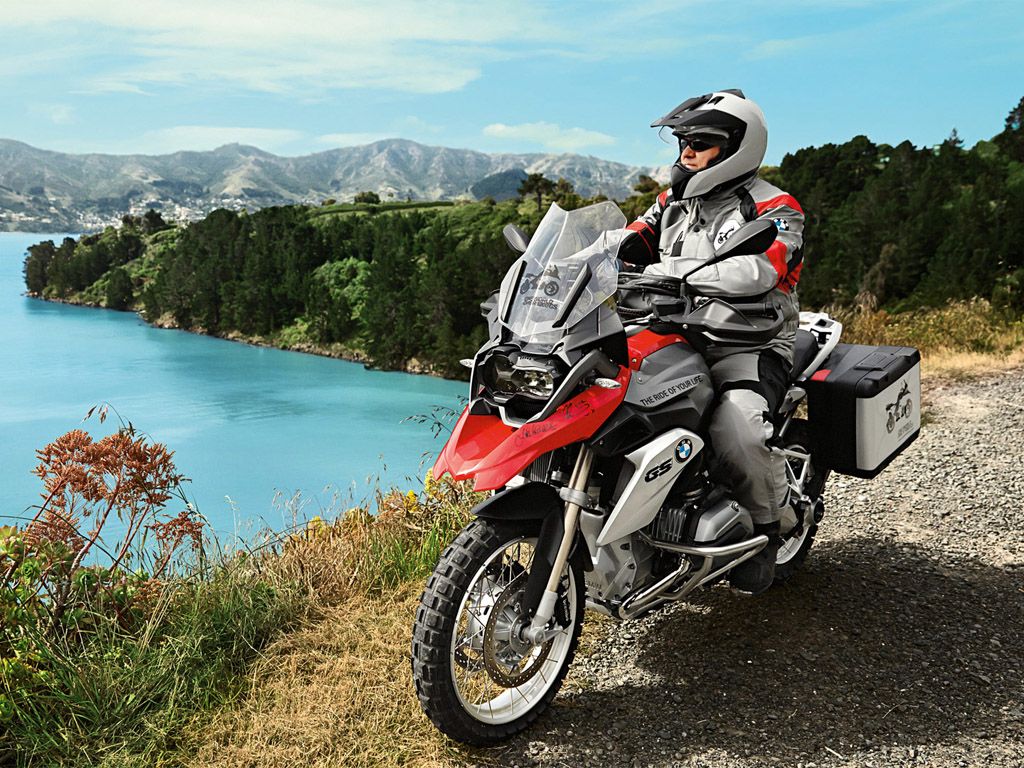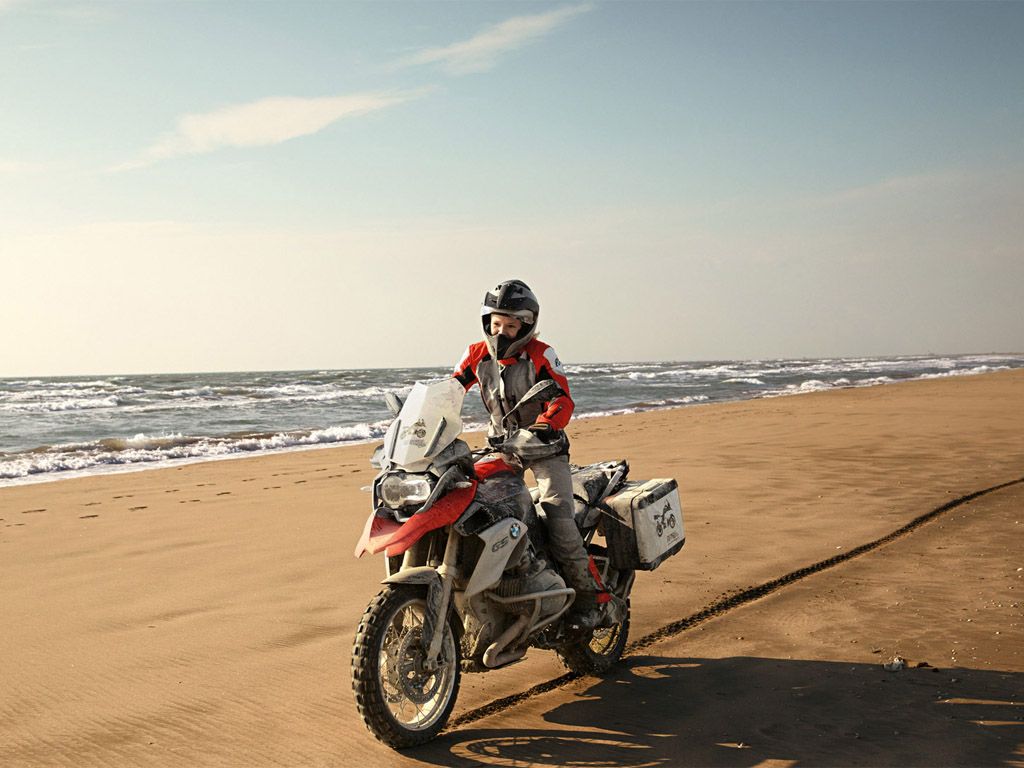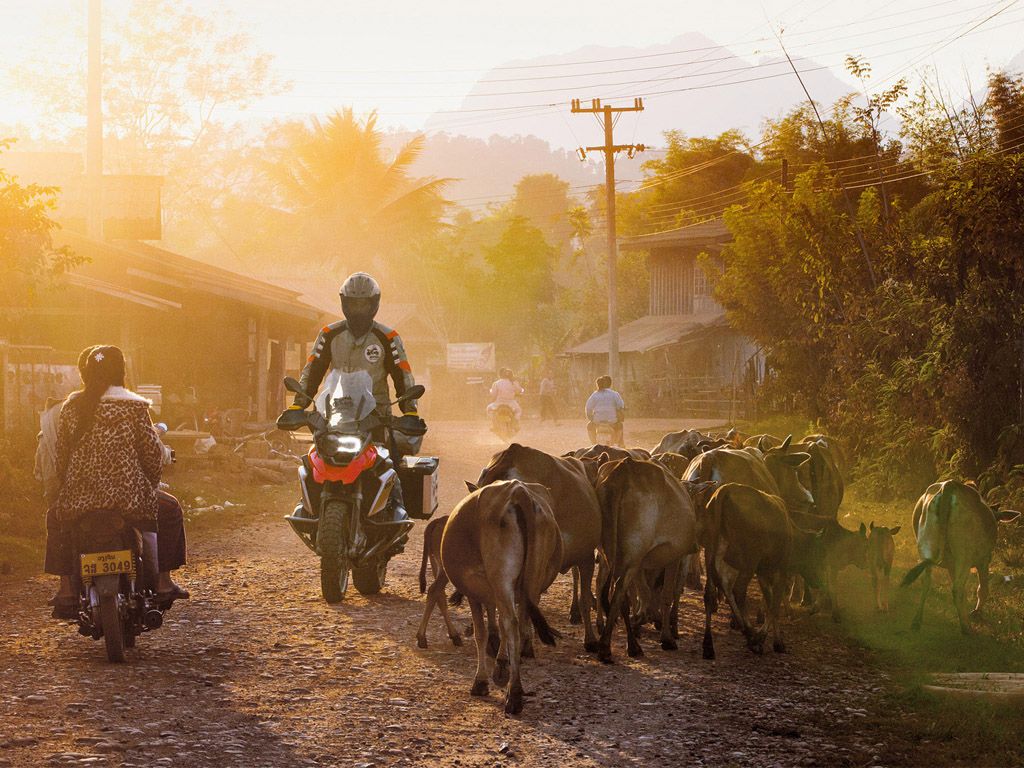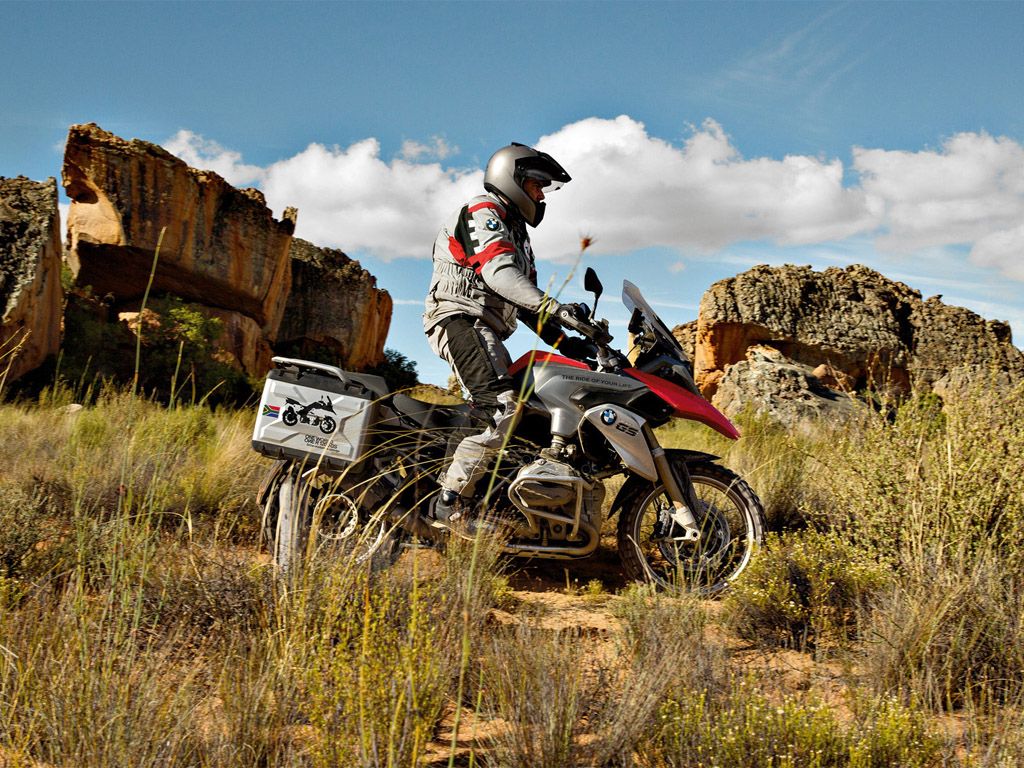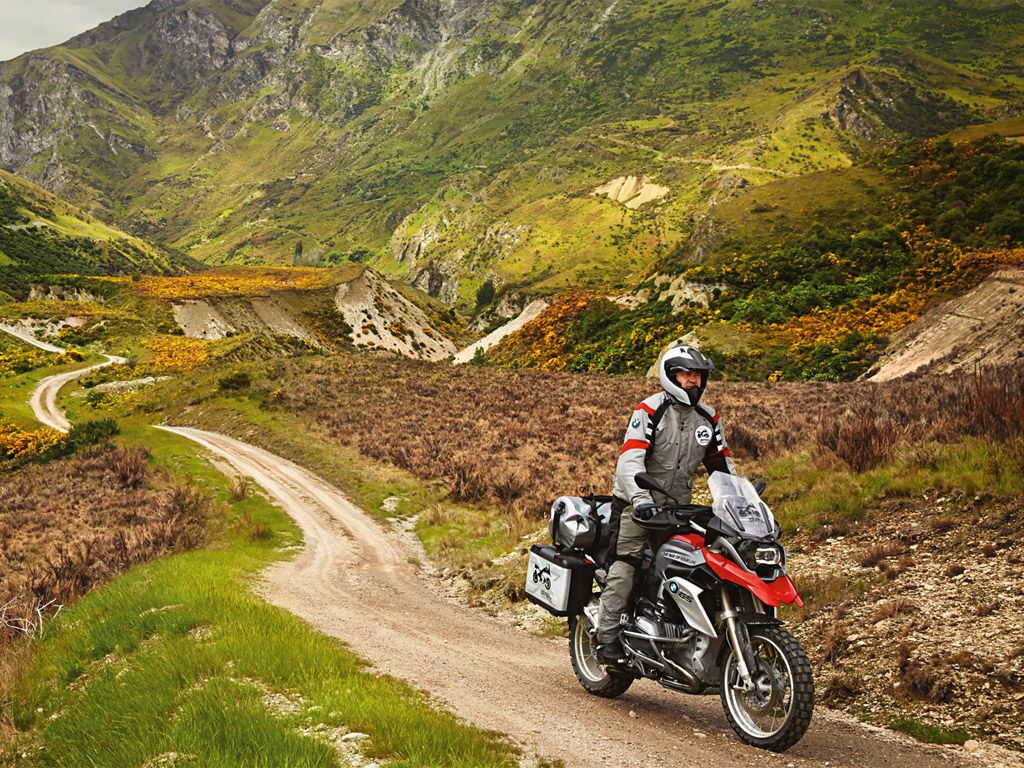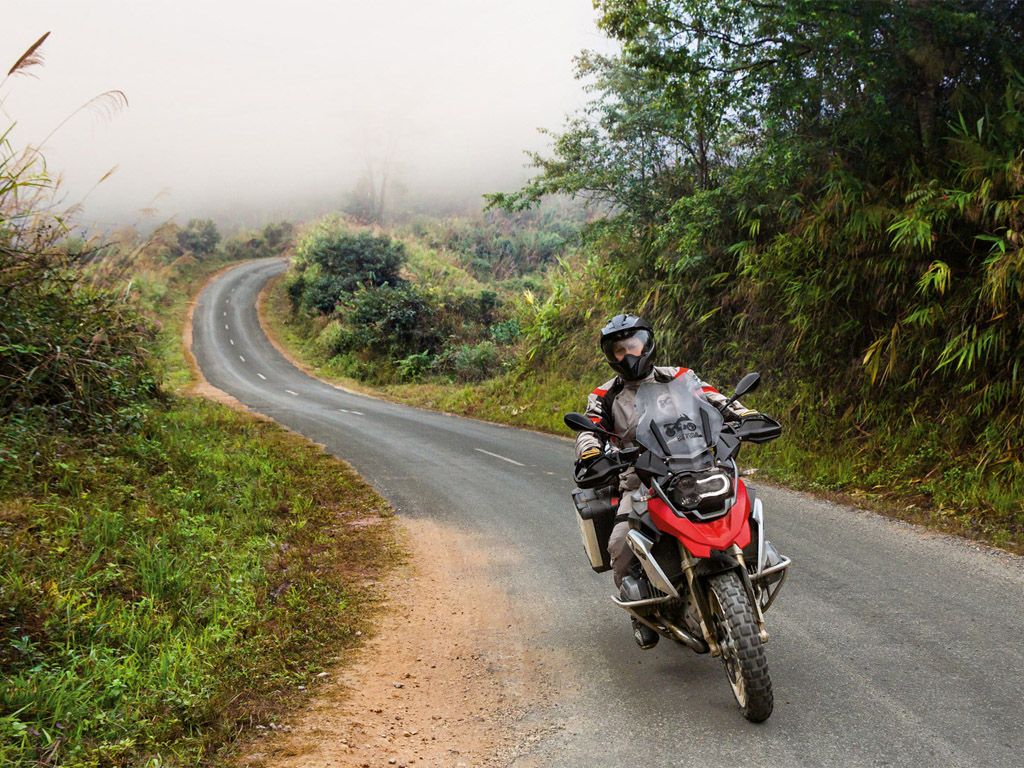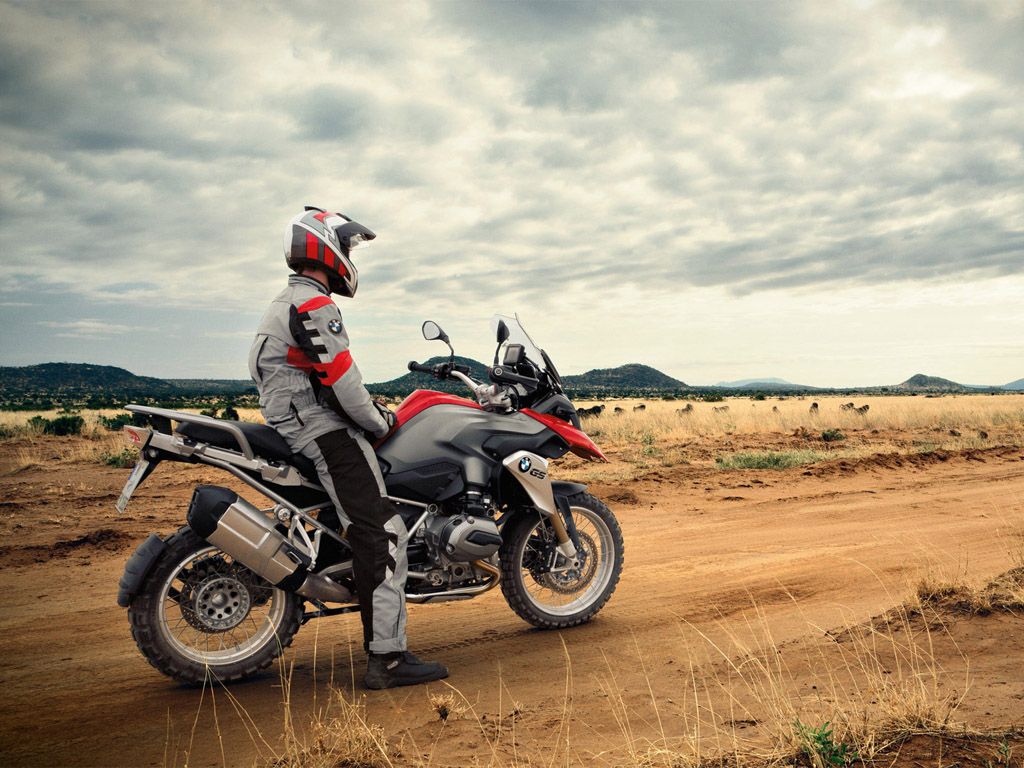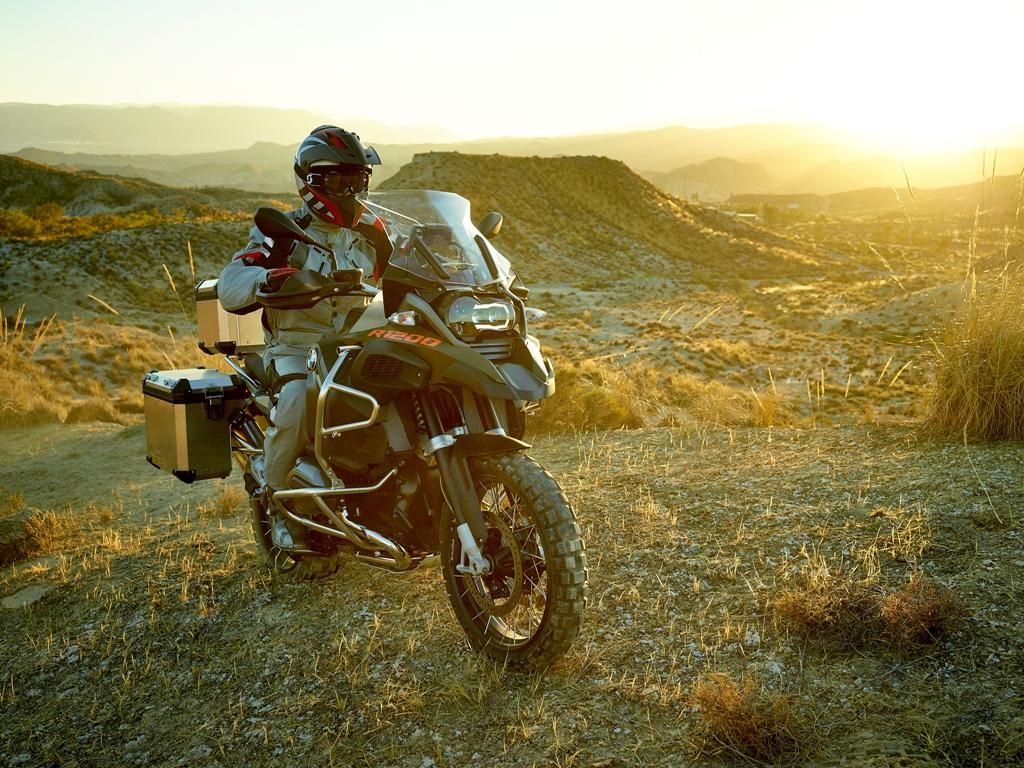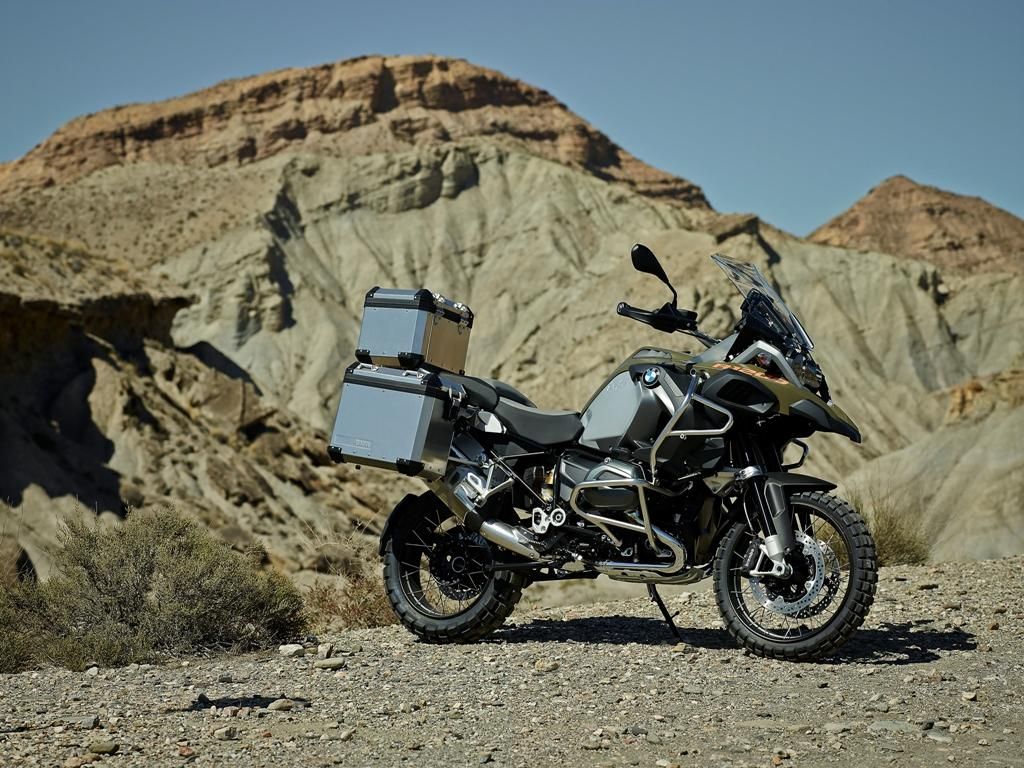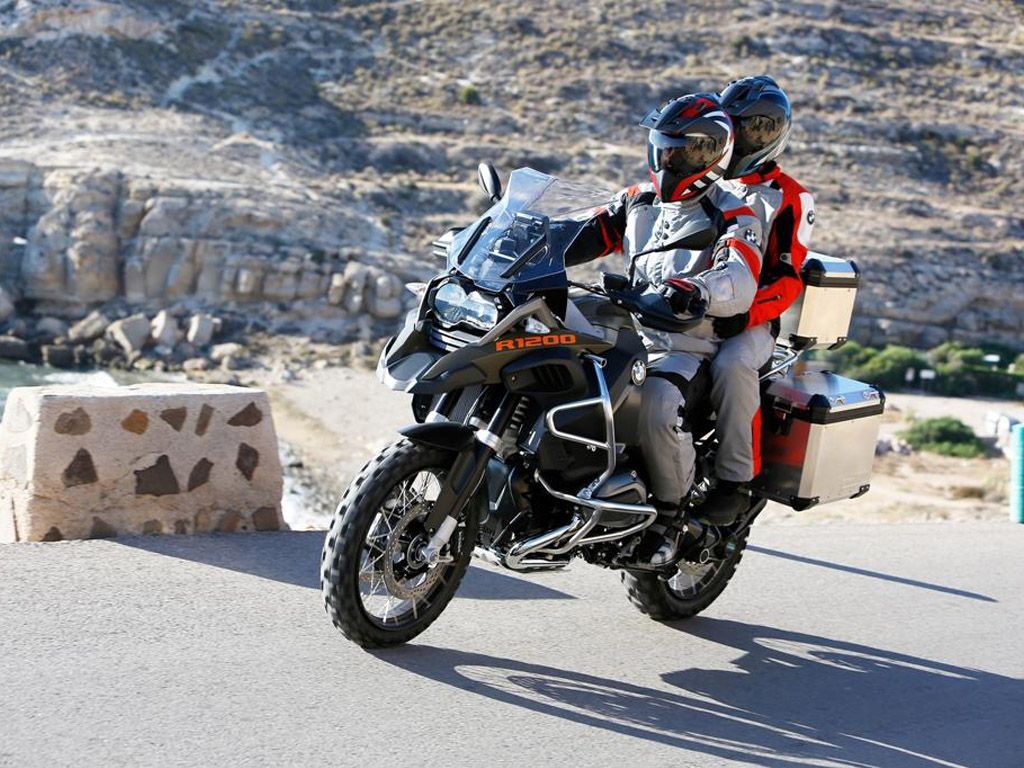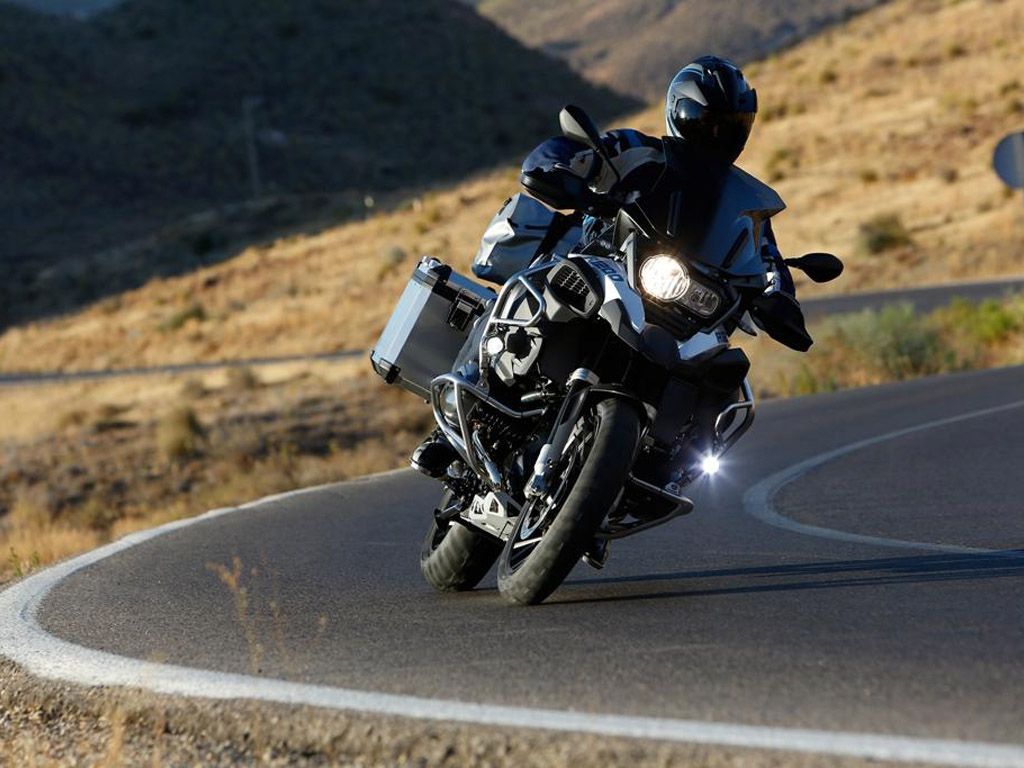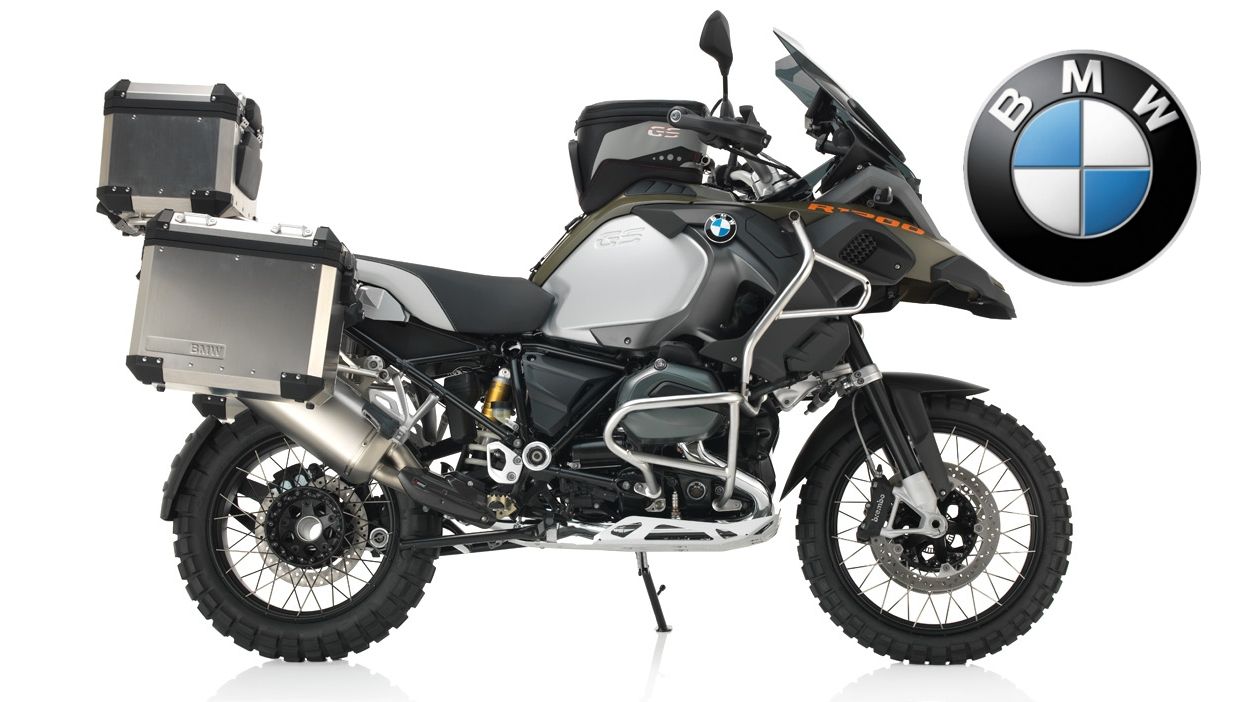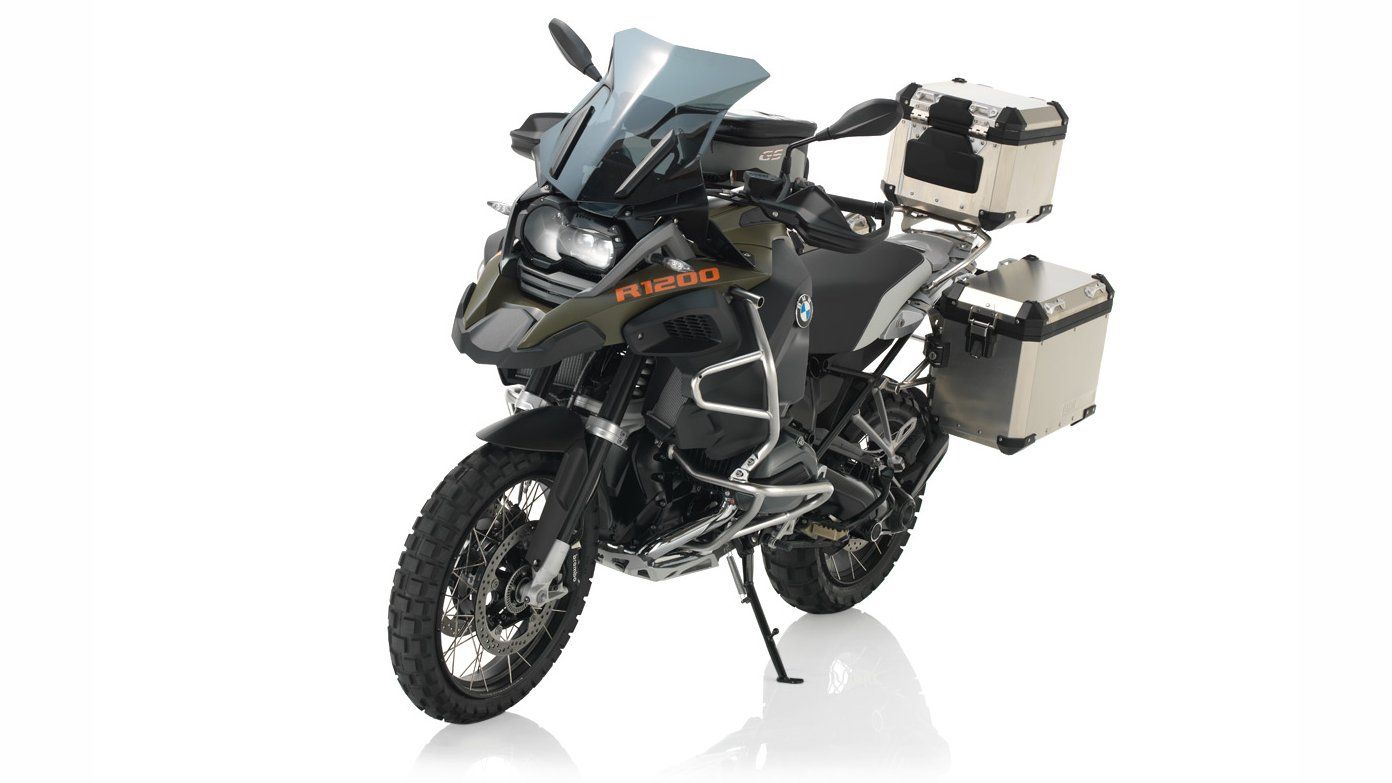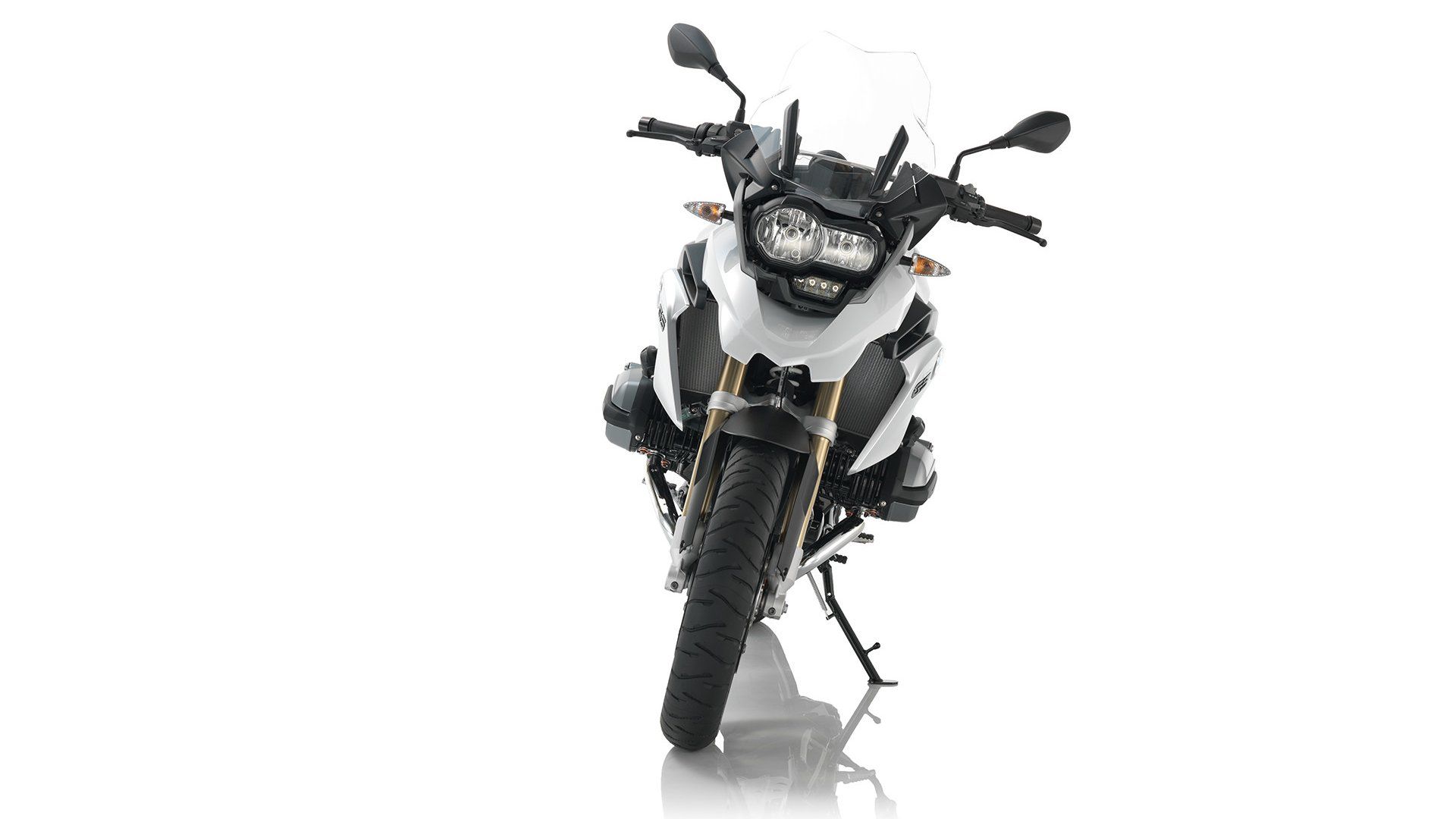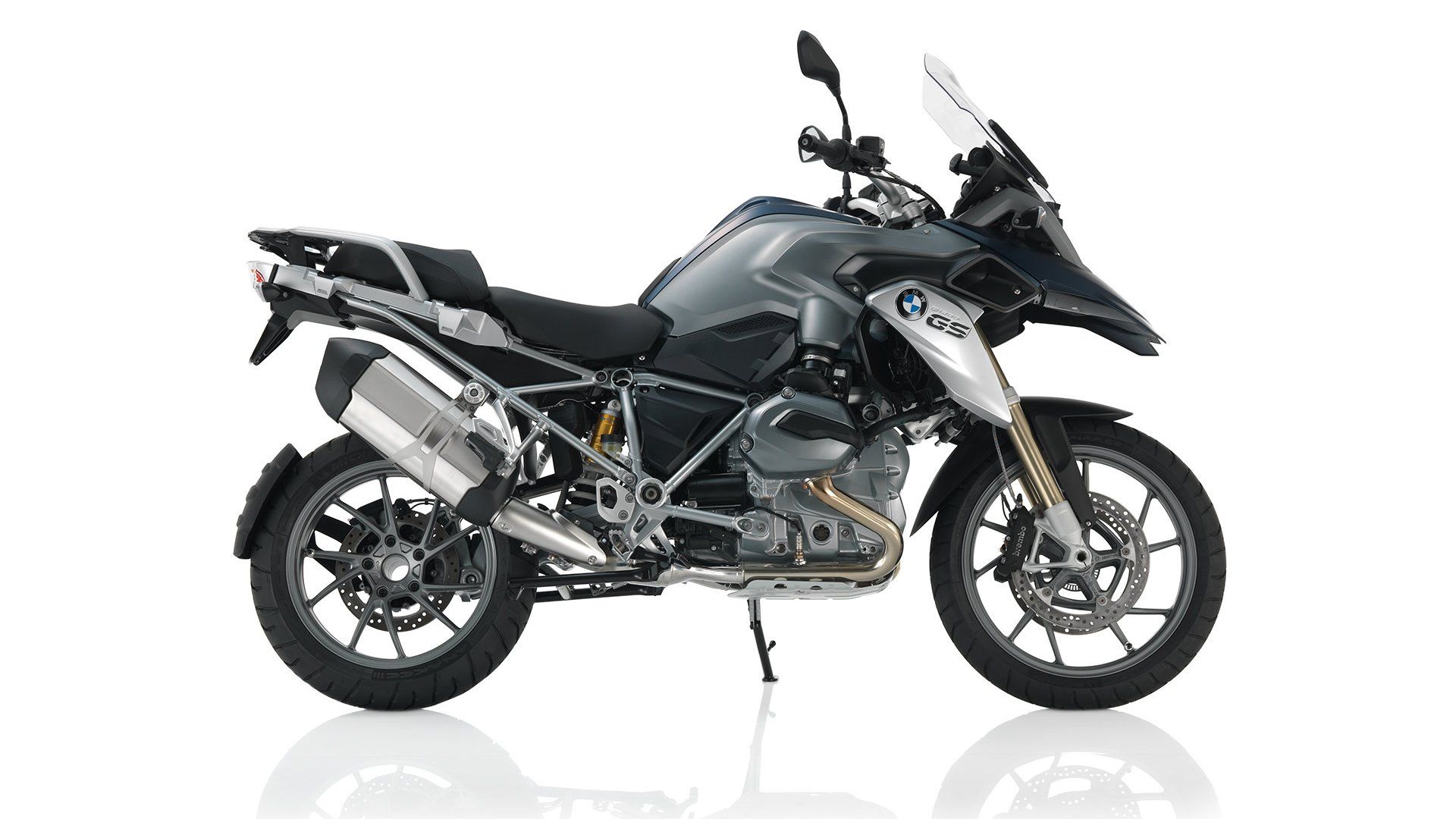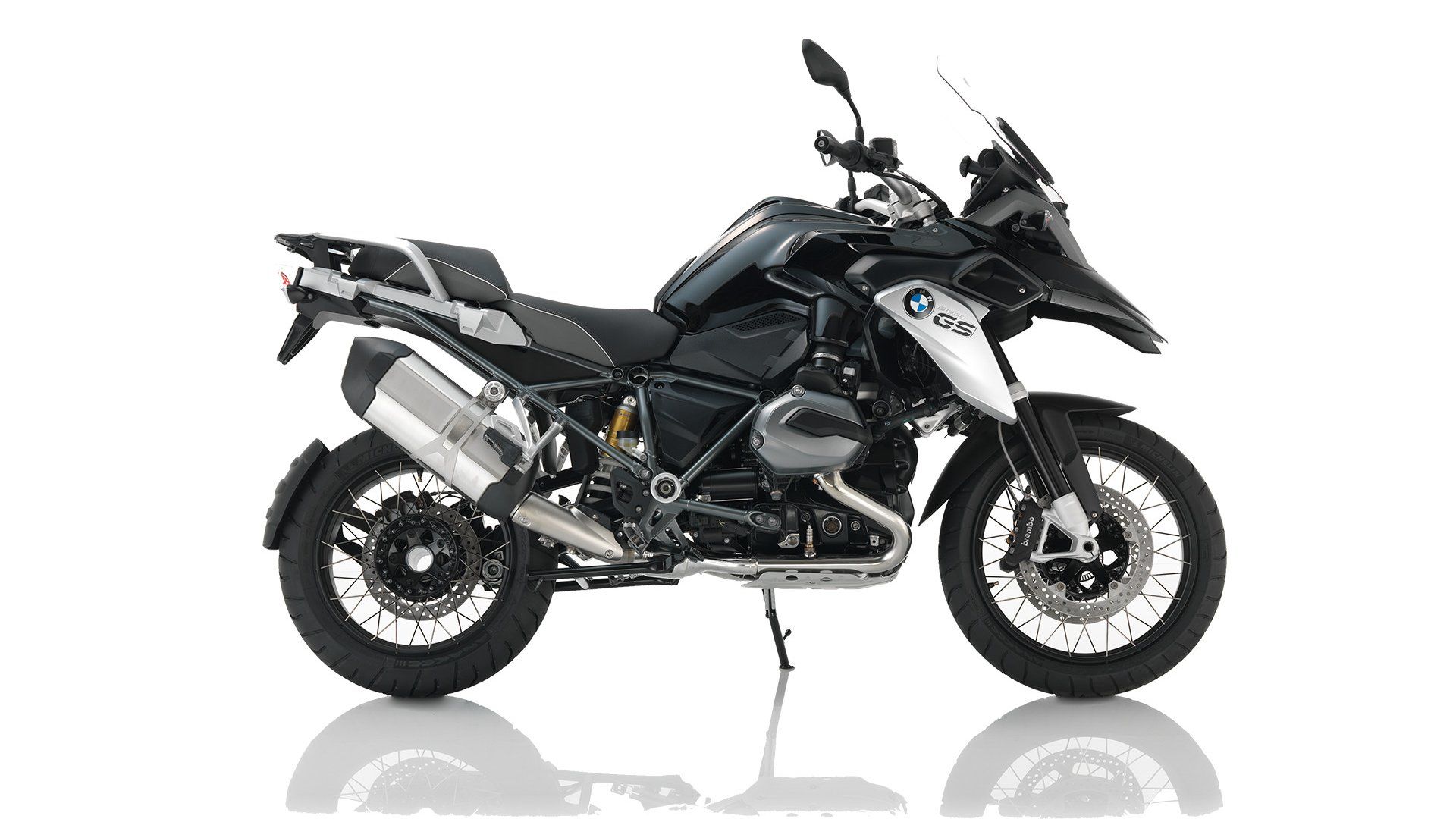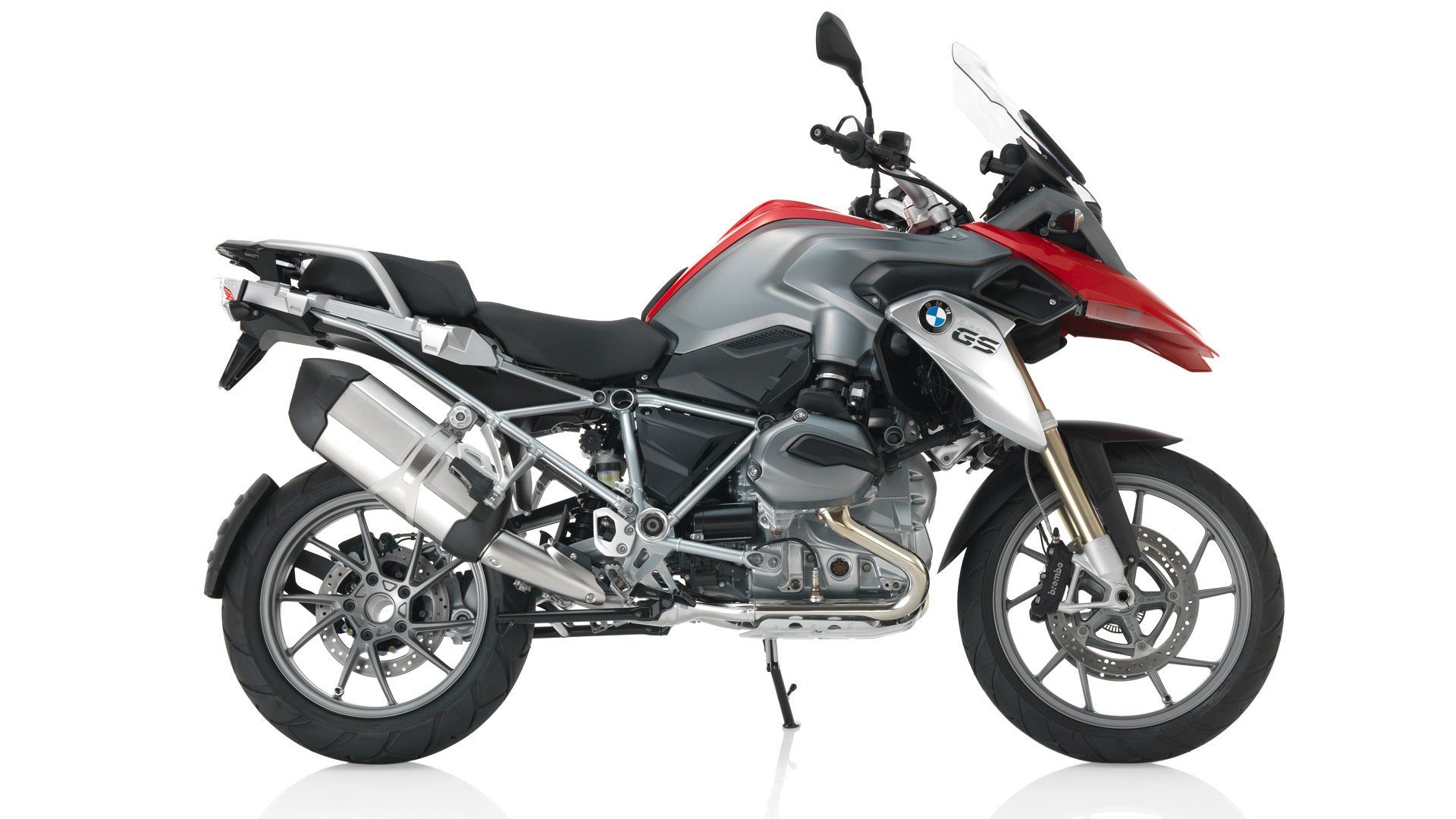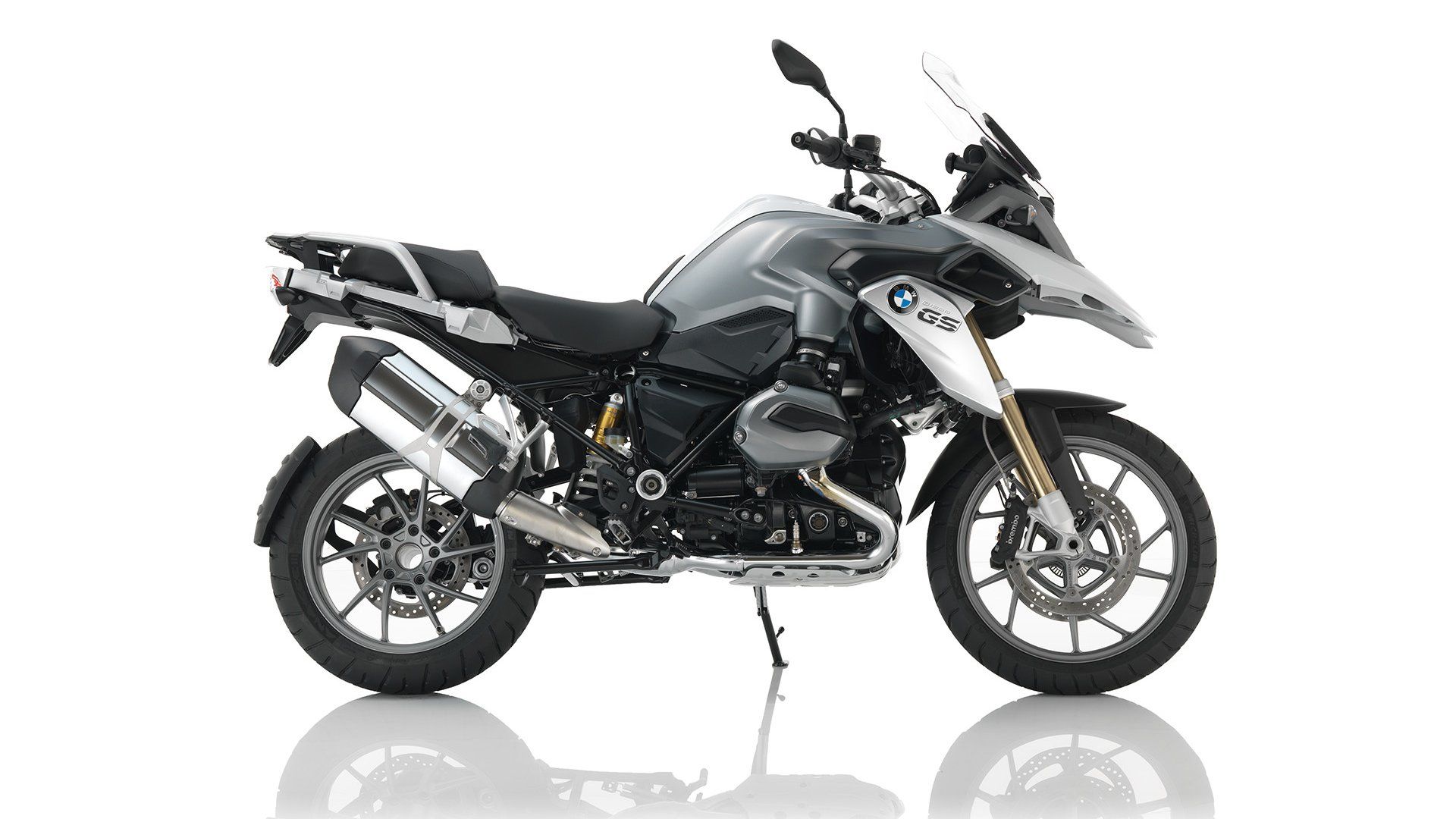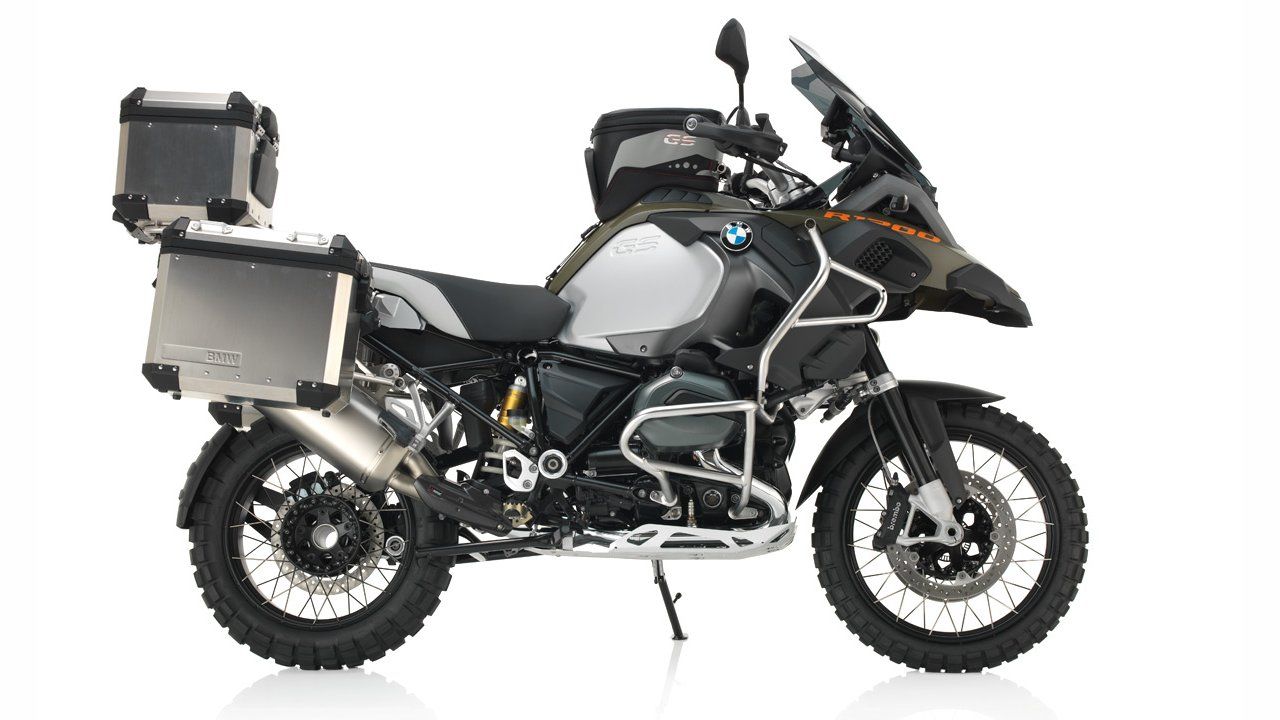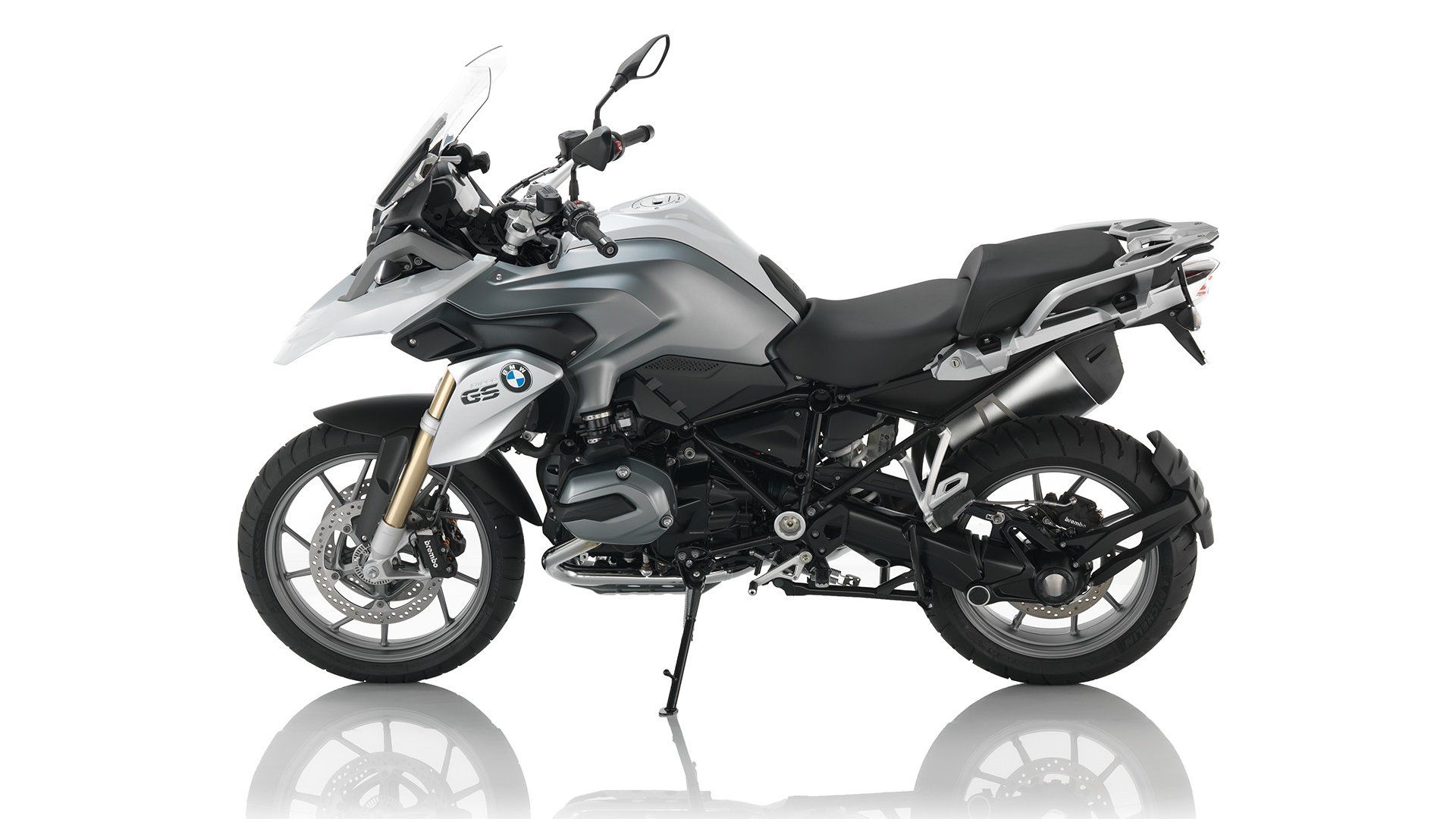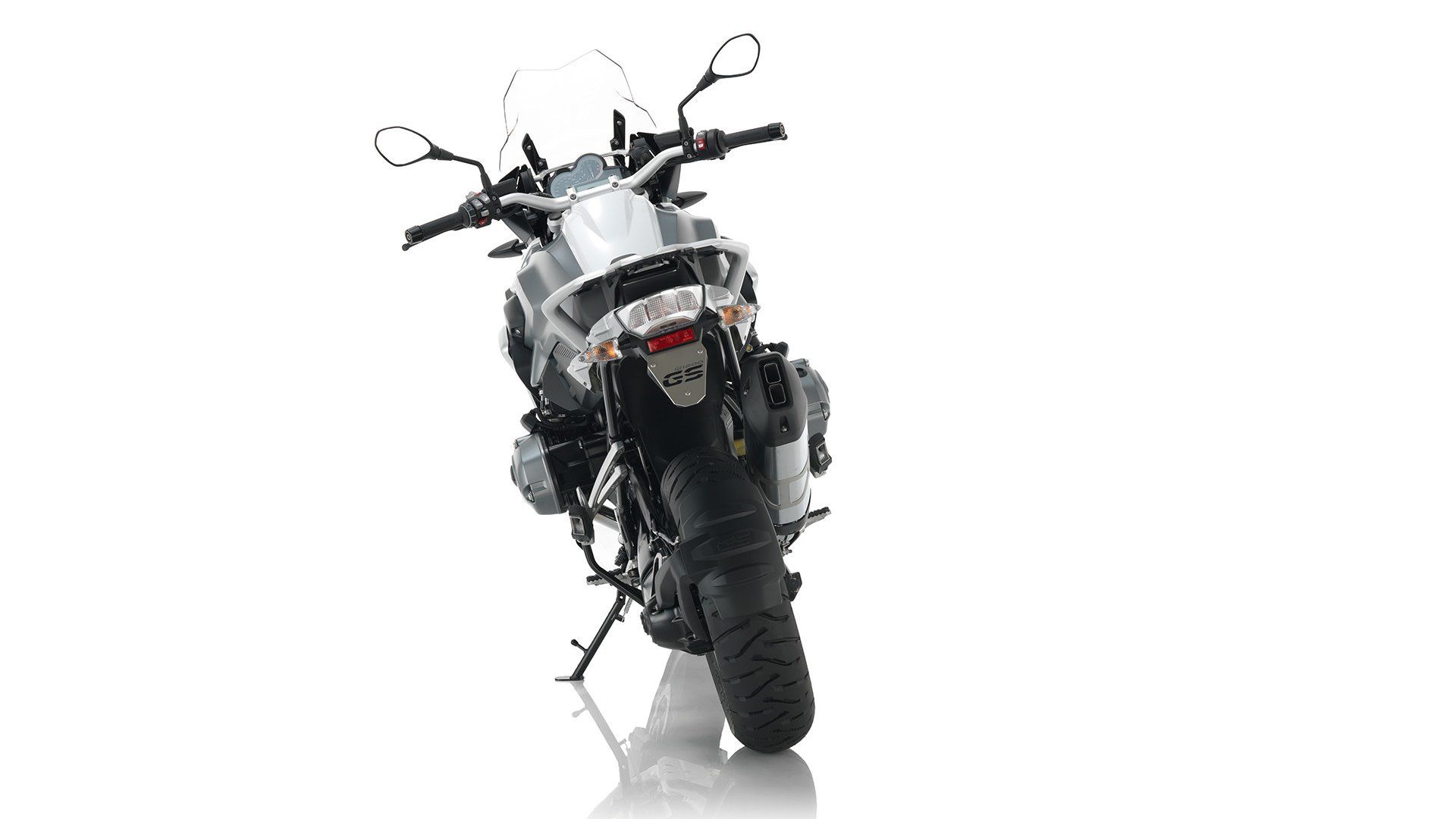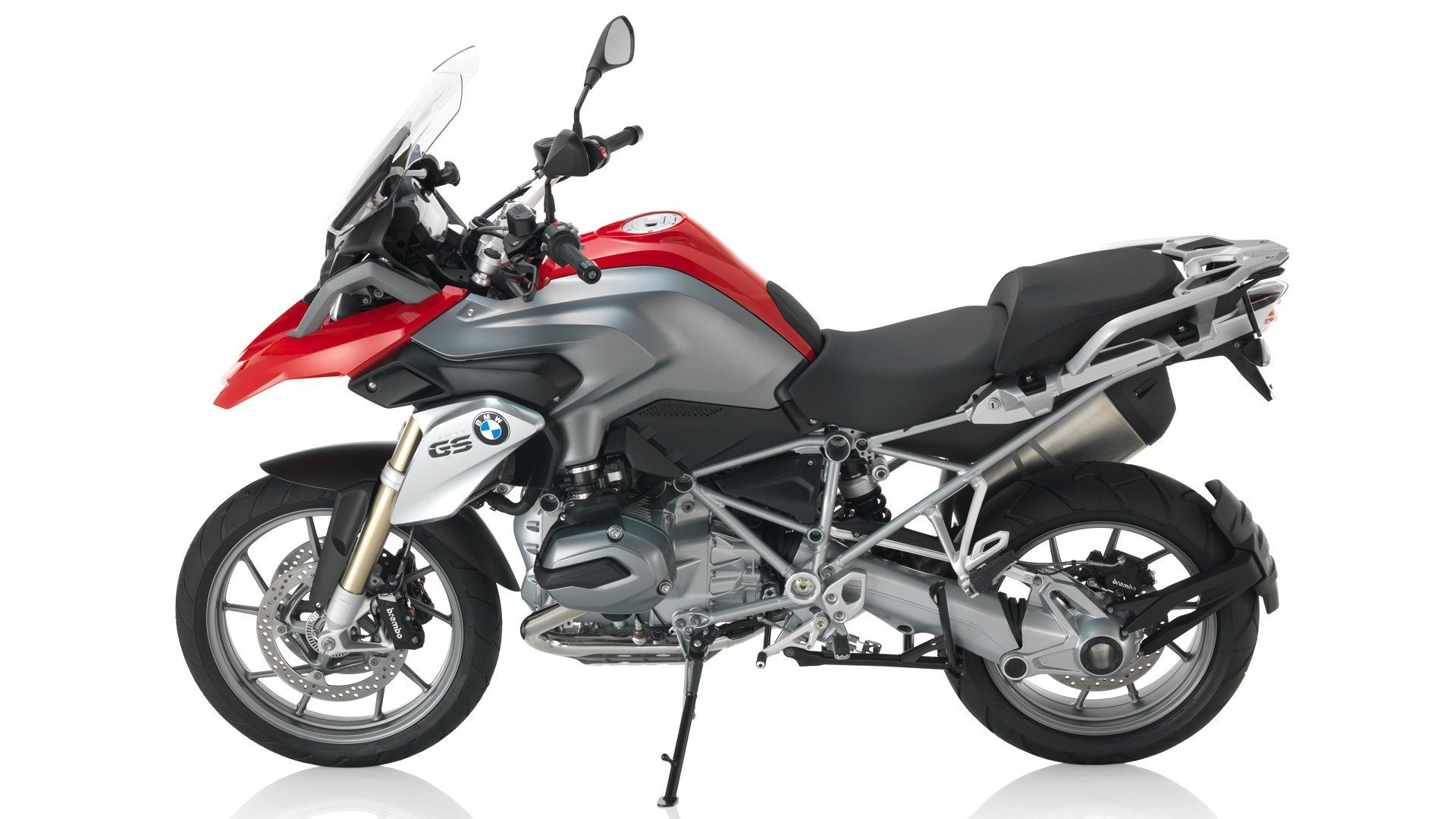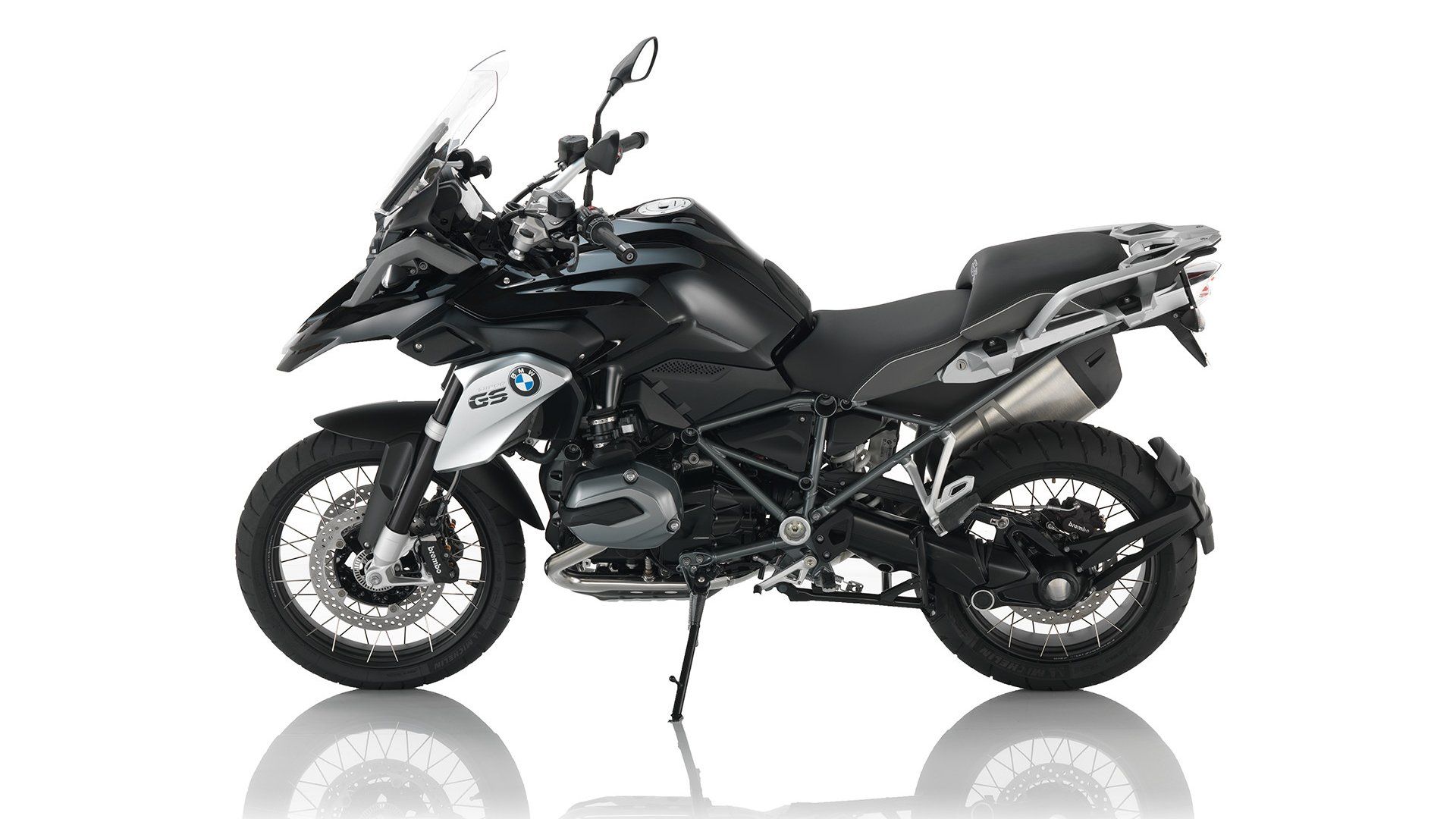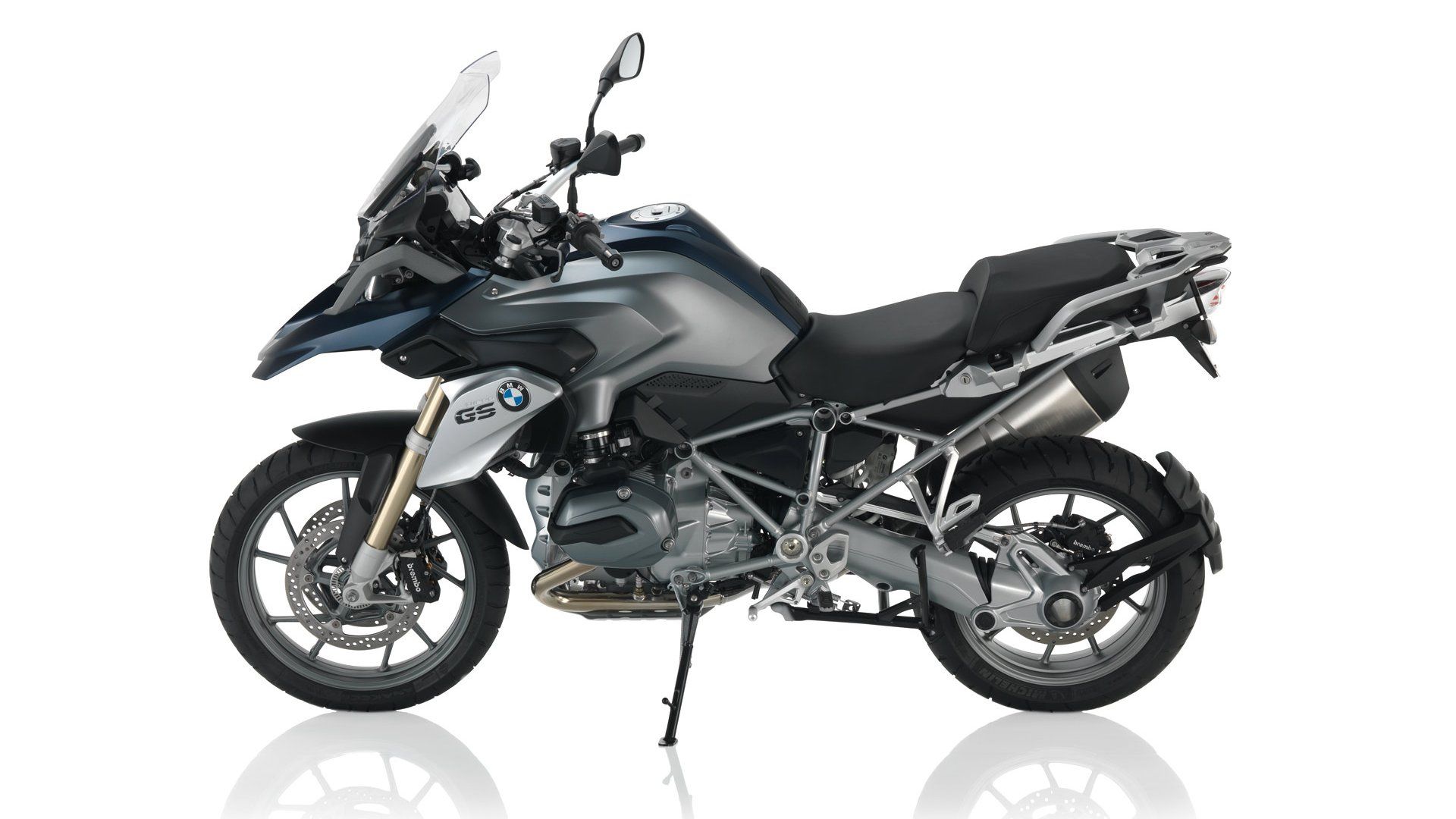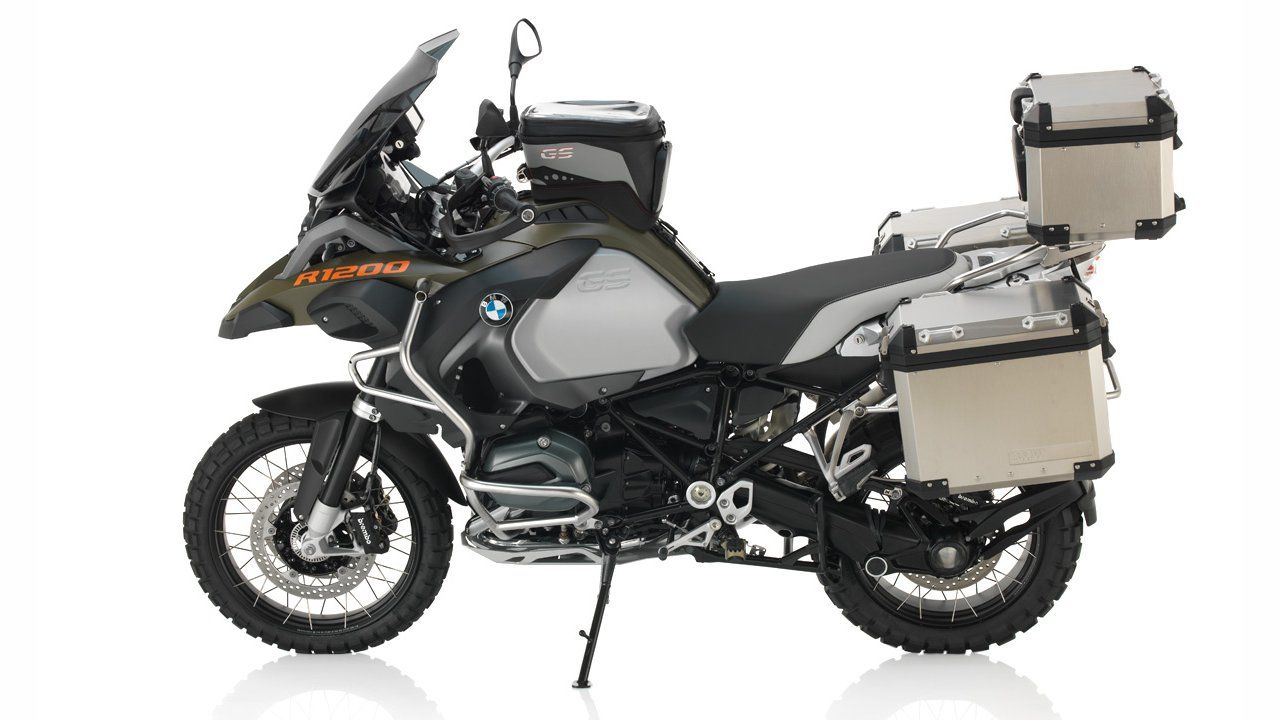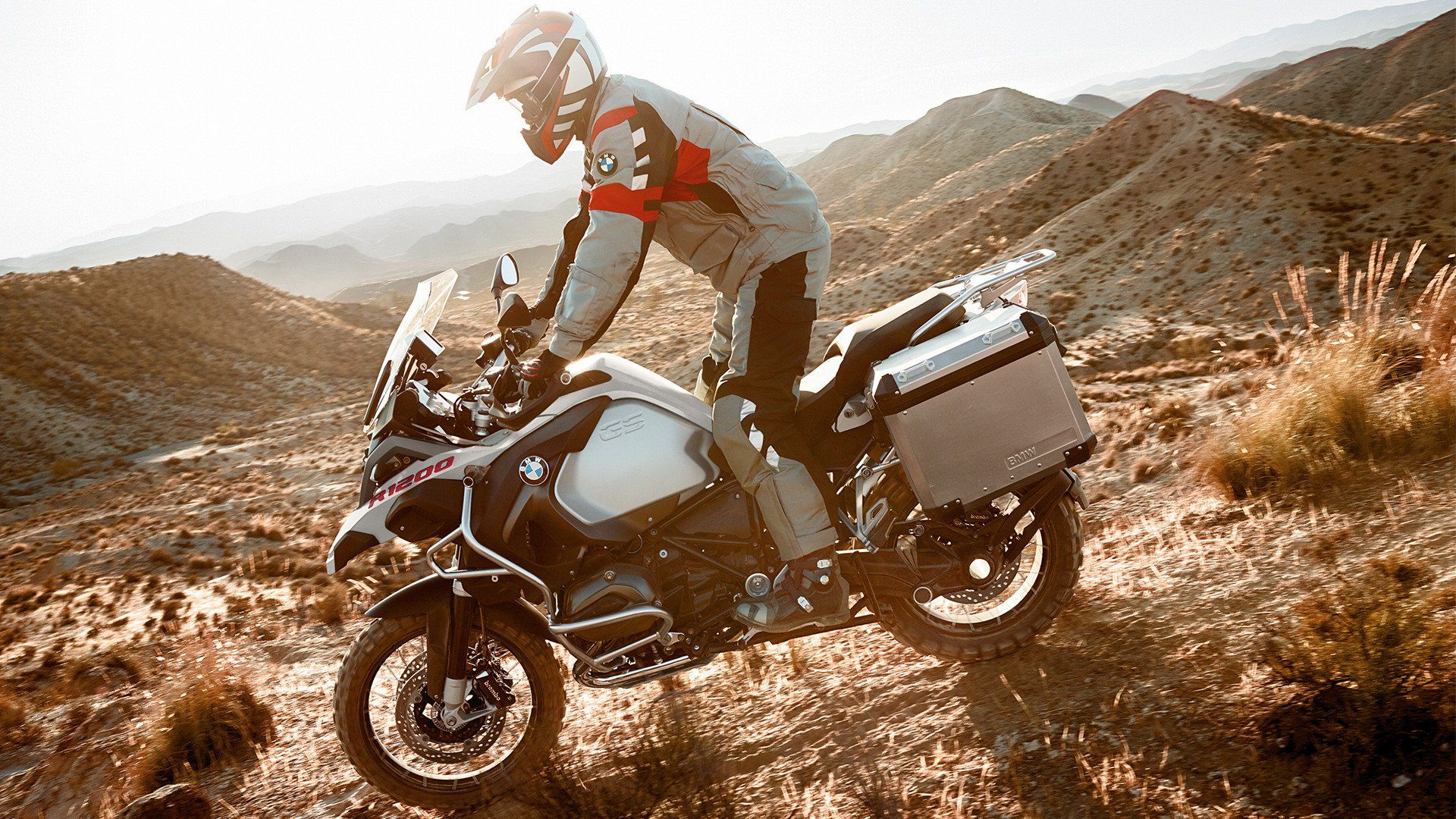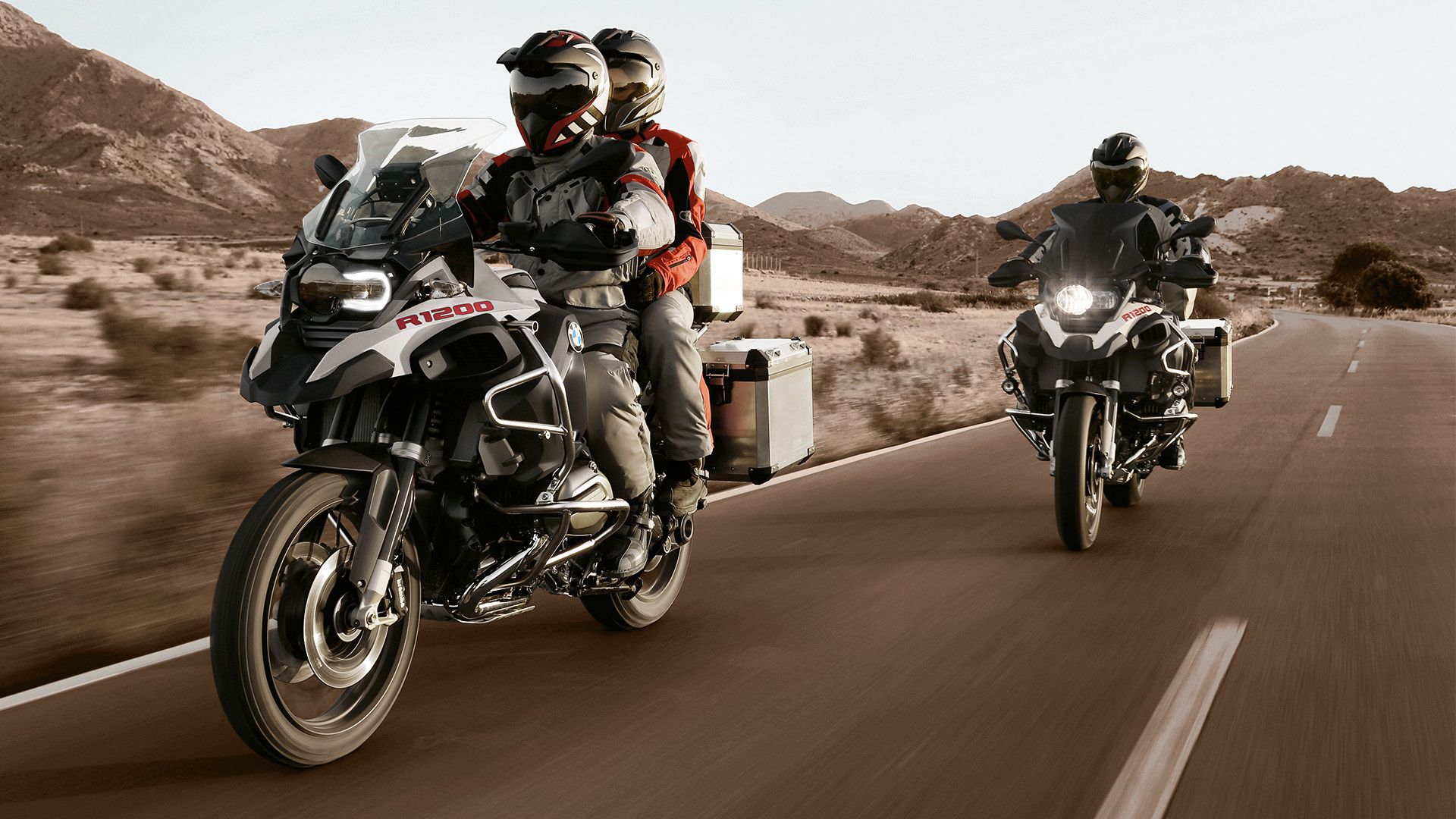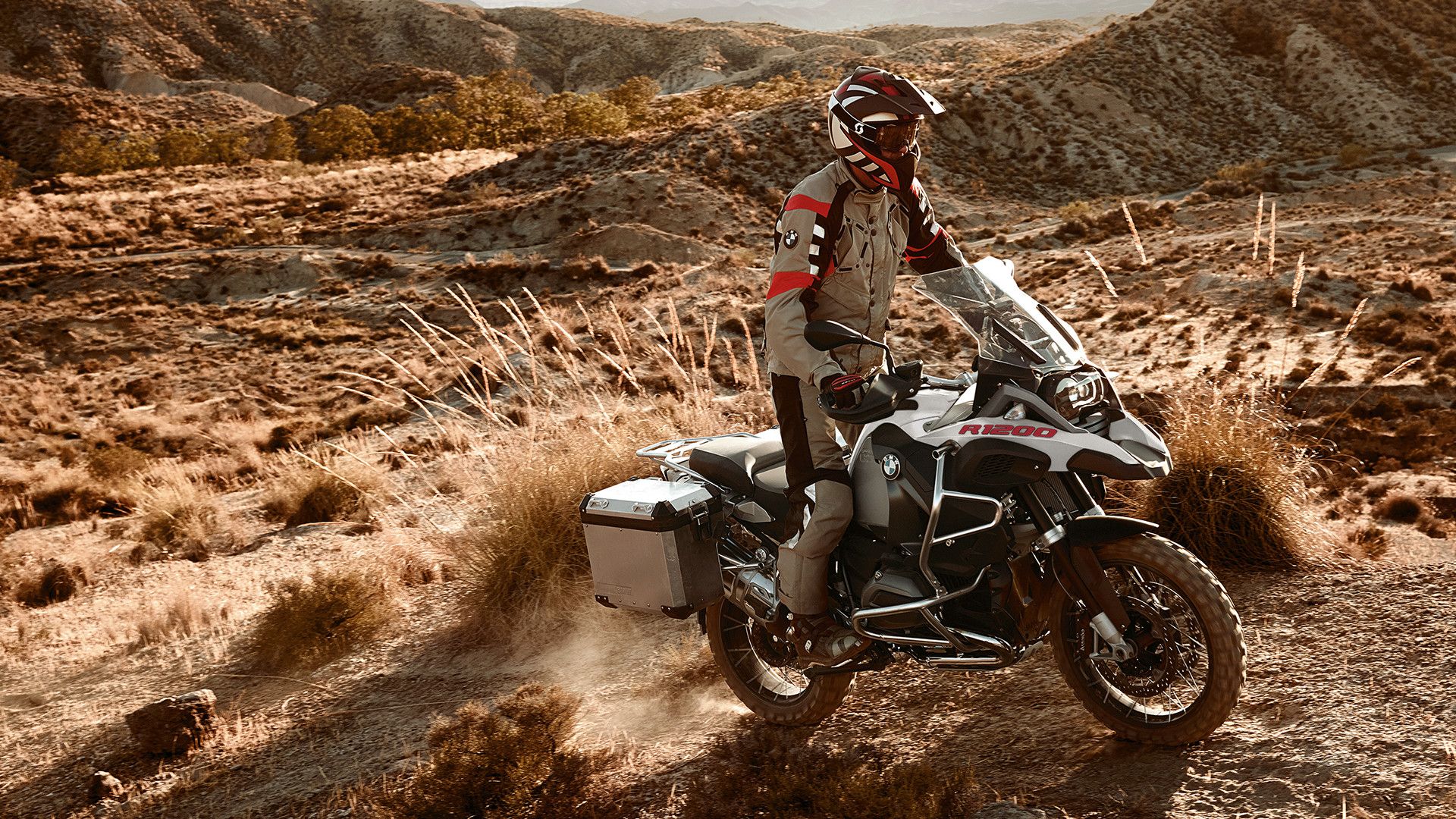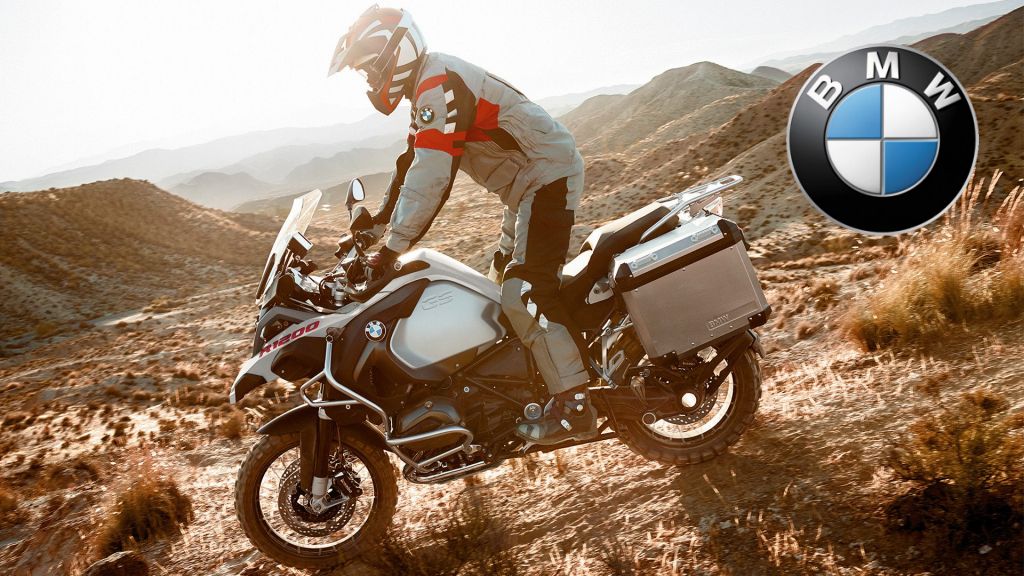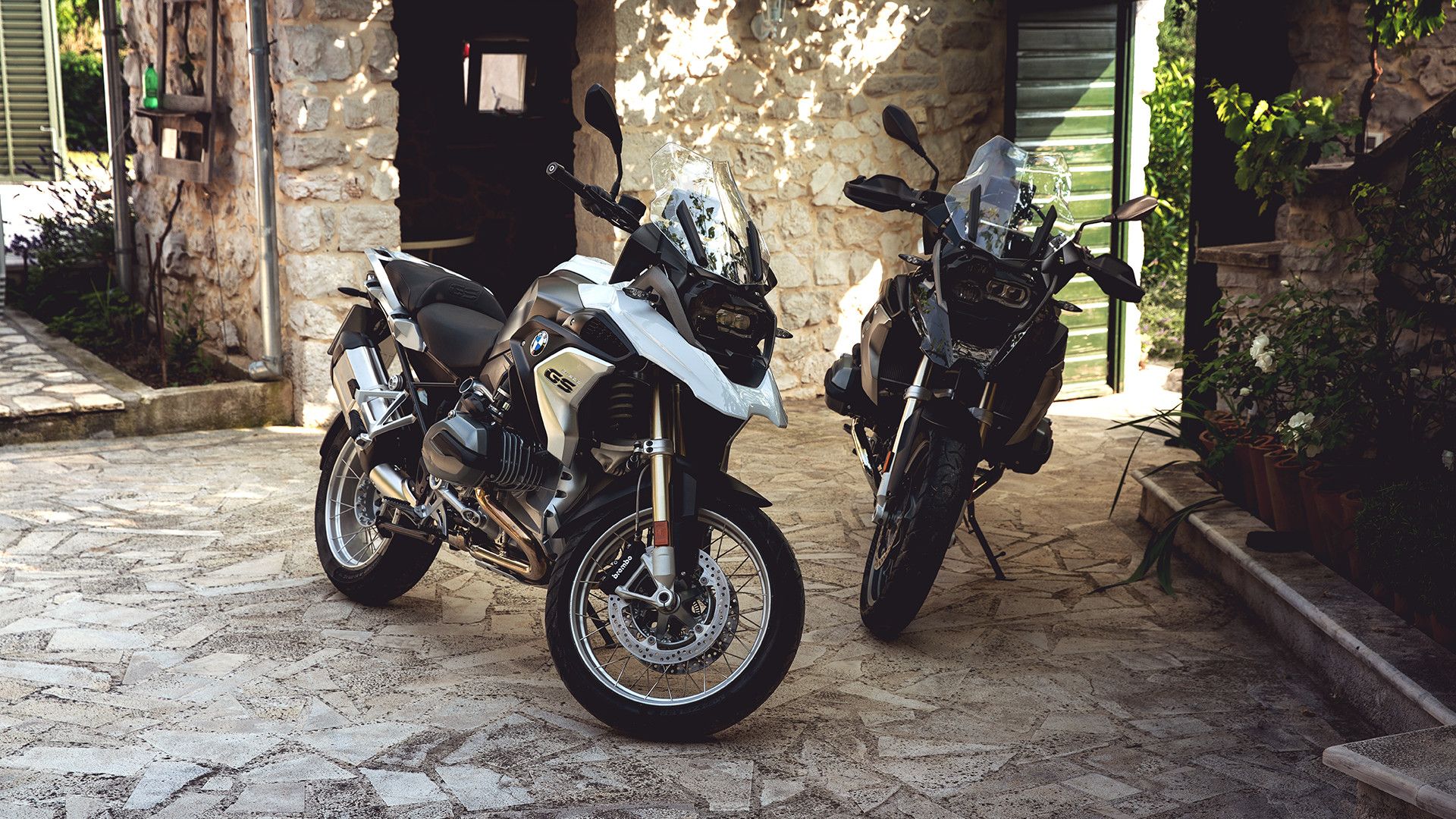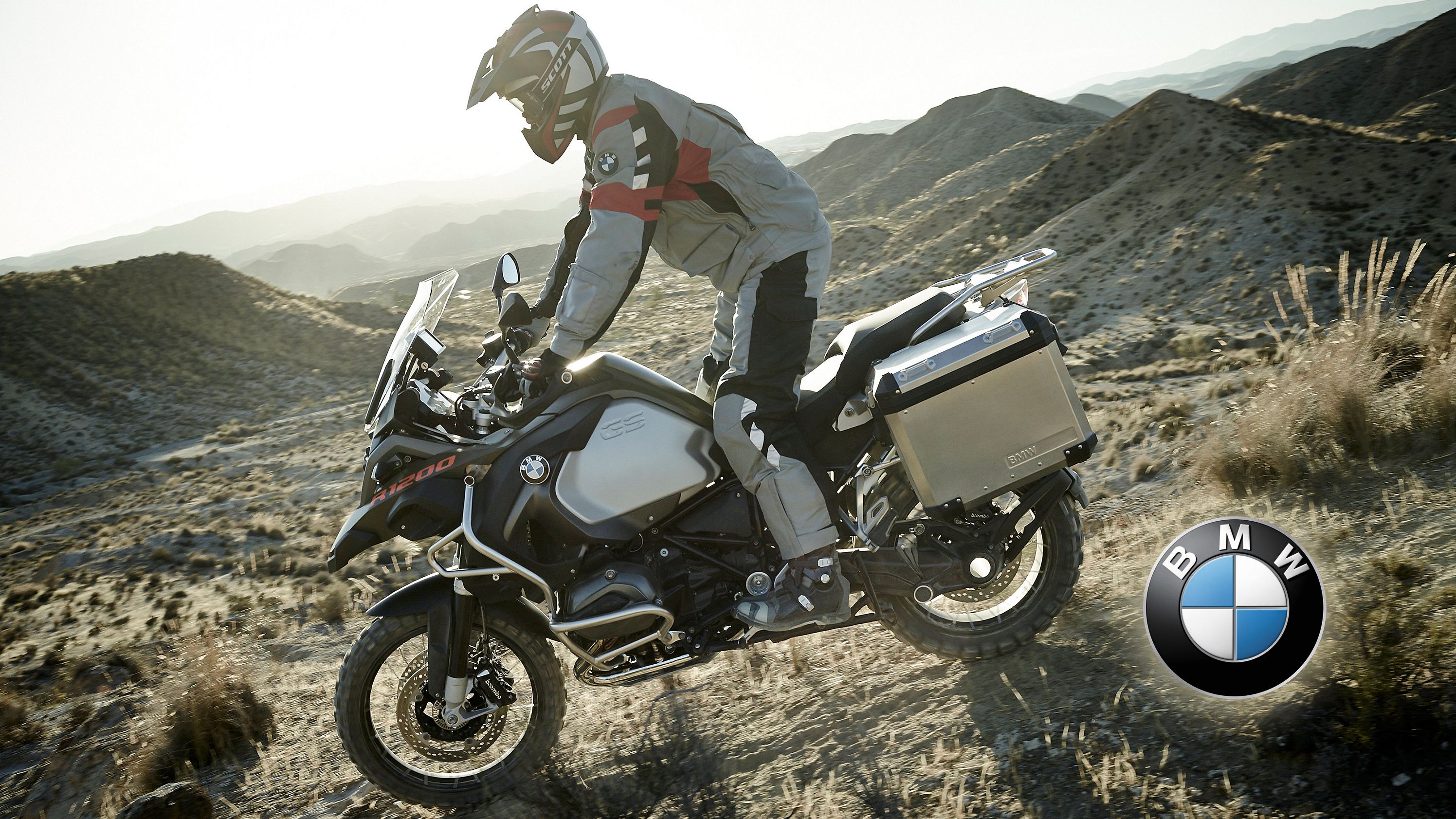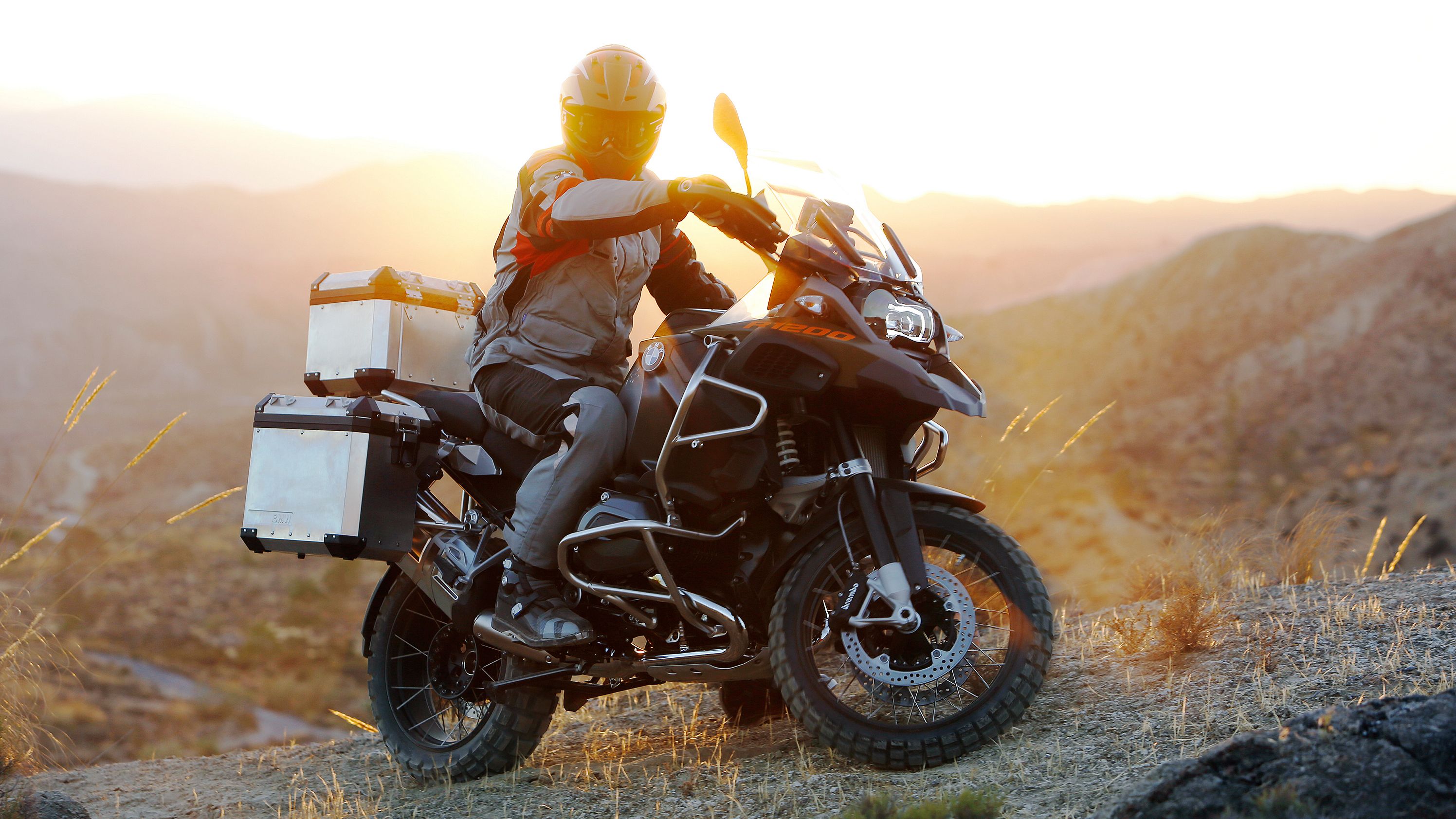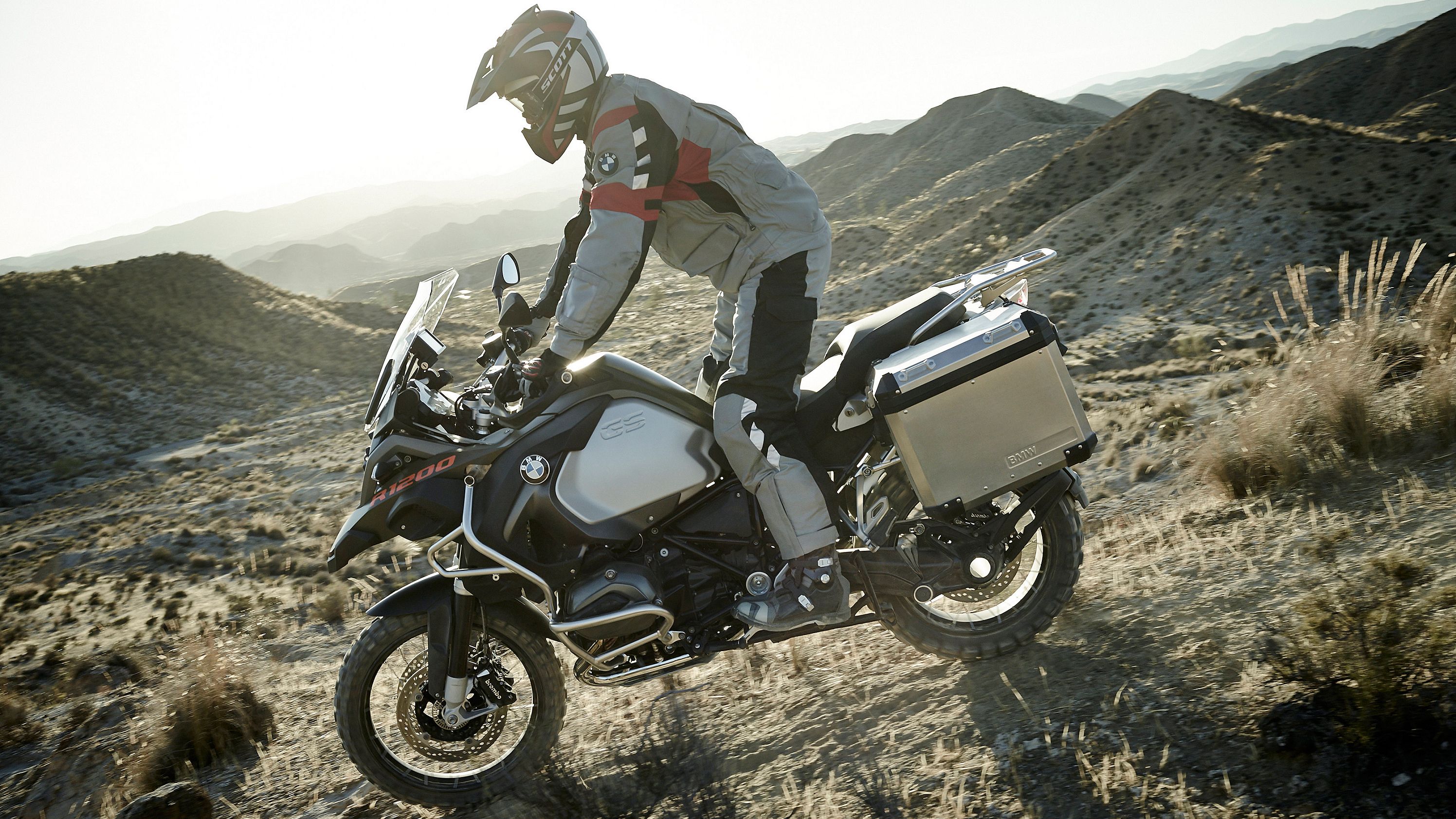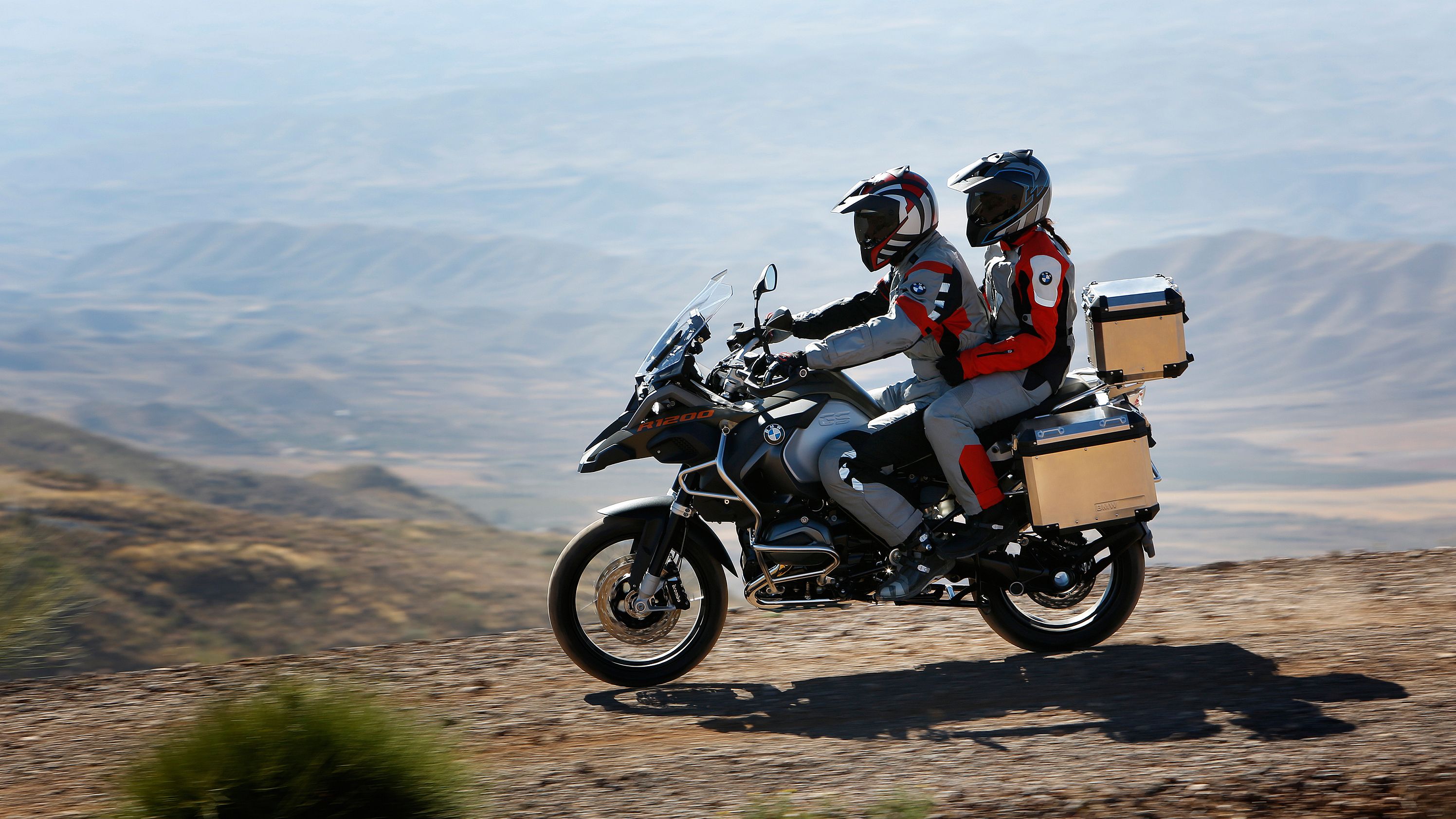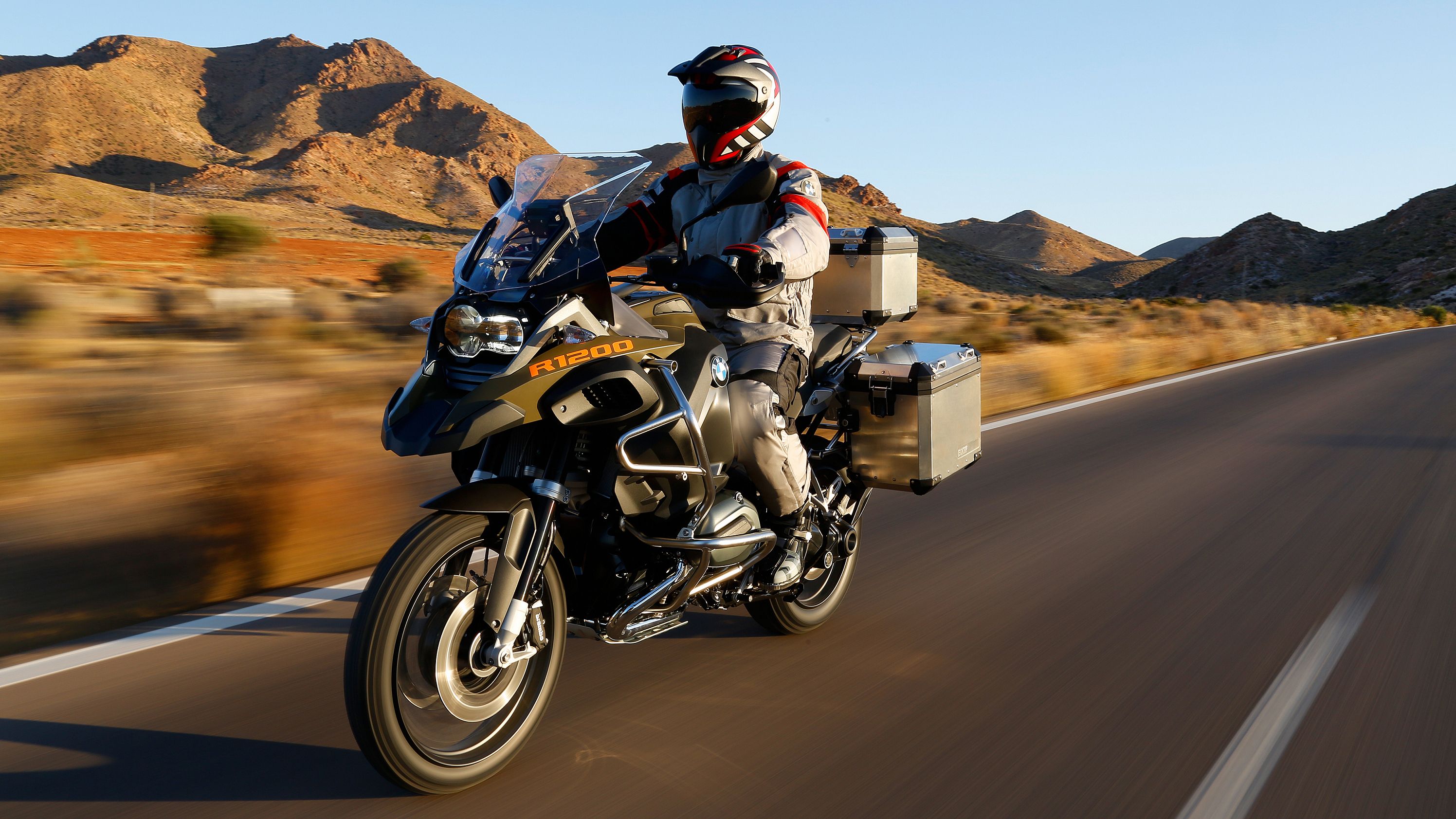BMW->ke1398 continues its GS->ke3647 legacy into 2017 with the R 1200 GS and R 1200 GS Adventure. With a new cooling concept integrated into the muscle-up-front design from last year, the R 1200 GS looks even more ready and capable to carry you on the adventure of your choosing.
Standard with disengageable integral ABS, traction control, an on-board computer, a height-adjustable saddle, stepless adjustable windscreen, a pillion adjustable fore and aft, and removable passenger pegs, the R 1200 GS and R 1200 GS Adventure are great choices for on-road and off-road->ke450 touring->ke2669.
Continue reading for my review of the BMW R 1200 GS and R 1200 GS Adventure.
2016 BMW R 1200 GS / R 1200 GS Adventure
- Make: Array
- Model: 2016 BMW R 1200 GS / R 1200 GS Adventure
- [do not use] Vehicle Model: Array
Design
The R 1200 GS comes with what I consider a pretty standard 5.3-gallon tank -- fairly standard for a tourer->ke2669, yeah? -- but the R 1200 GS Adventure has a fuel capacity of almost eight gallons. While that is a whopping amount of fuel, when you think about the bike's intended purpose, it makes sense.
Boths models come standard with two rider modes -- "Rain" and "Road." If you add the Ride Mode Pro, which comes in the Premium Package of options for each respective model, you add a "Dynamic" mode that gives you a sportier riding experience, an "Enduro" mode that tunes ABS, traction control and the suspension for off-road, and the "Enduro Pro" mode. "Enduro Pro" turns off ABS to the rear wheel and tunes the bike for some serious off-road adventure. New from 2016, ABS Pro, which is a cornering-optimized ABS, was also included as part of the Ride Mode Pro.
Option packages for each model include the most popular choices. For the R 1200 GS, you have the choice of a Standard package or a Premium package. The Standard package gives you Dynamic ESA, heated grips, cruise control, hand guards and saddlebag mounts -- no bags, just the mounts. The premium package gives you everything in the Standard package plus the LED headlight, tire pressure monitor, On-Board Computer Pro, Rides Pro, and GPS mount with hook-ups -- no GPS, just the do-dads needed to add one.
On the R 1200 GS Adventure, your only choice is a Premium package that adds everything that GS Premium package gave you -- except the hand guards; they're standard on the GSA -- plus LED auxiliary lights.
For the start of 2017, other than an updated instrument panel design, both models are a carry-over from 2016; but later in the year, we'll see mid-year updates on them that should prove interesting.
Chassis
BMW went with a rather minimal frame designed to help keep overall weight down while providing the rigidity and toughness. The continuous tubular steel bridge-type frame uses the engine as a stressed member, and the mill actually comprises a large part of the overall assembly.
Both the GS and the GS Adventure come with a skid plate to protect the engine in its proffered position under the frame, an important feature given the designed purpose of these rides as on- or off-road machines. Engine guards and an expanded skid plate are available in the accessories catalog, and I strongly recommend that you take a look at them if you plan on doing any “Long Way Down/Round” work with it.
Frame design varies but a little between the two models, with a 64.5-degree steering-head angle on the GS and a 65.5-degree angle on the GSA. The Bayerische Motoren Werke measures its rake angle from the horizontal, instead of the vertical like U.S. manufacturers do, so this translates to 25.5 degrees on the GS and 24.5 degrees on the GSA.
The suspension and rolling gear highlight the divide between the models. While they both run 37 mm, usd front forks, the GS suspension provides 7.5 inches of travel up front, versus the 8.3-inch travel on the GSA.
A cast-aluminum, single-sided swingarm rides on BMW's EVO Paralever rear shock, and both bikes also share the hand-wheel feature for rear preload and damping adjustments to quickly dial in your ride. The rear shock floats the GS on 7.9 inches of travel and the GSA on 8.7 inches of travel.
Rim styles also vary, with the more road-tastic GS riding on cast wheels for street-handling stability, and the off-road-errific GSA on laced rims for that extra little bit of bump mitigation. As you might imagine, the two run on very different hoops. While both roll on 19-inch tires up front and 17-inch tires in back, the GS has tires geared more towards street use, while the GSA has deep-grooved knobbies with generous street flats for a more trail-friendly ride.
BMW's own Integral ABS modulates the brake pressures to prevent loss of traction at either wheel. The ABS works with the four-pot calipers and dual, 305 mm brakes discs up front and the single-pot caliper and 276 mm disc in back. If you prefer a more traditional brake feel and response, you can disable the ABS and use just the raw, unaugmented brakes.
Drivetrain
Nothing says BMW quite like a twin-cylinder boxer engine, and the GS series is no exception. The four-stroke flat-twin engine uses a combination of water- and air-cooling to carry off waste heat, and a DOHC setup actuates the four valves in each head. Excessive vibration used to be part of running a flat-twin engine, but BMW tamed that problem through the use of a balancer shaft, so you get that classic look with less of the old, undesirable engine traits.
A Ride-by-Wire (RbW) throttle actuator controls the induction, and electronic fuel injection supplies the gas while the closed-loop catalyst takes care of emissions.
All of this adds up to an engine that punches a bit above its weight. It cranks out 125 ponies at 7,750 rpm and 92 pound-feet of torque at 6,500 rpm -- and this out of only 1,170 cc. Fuel economy is pretty good as well, with around 56 mpg at 55 mph, and both are capable of reaching 125 mph. A six-speed, helical gearbox powers the shaft-type drive, and a slipper clutch prevents wheel hop and excessive back torque.
Pricing
MSRP on the 2016 R 1200 GS starts at $16,495, though if you want it in Frozen Dark Blue Metallic, you'll have to cough up $100 more. To make the GS more off-road-tastic, add spoke wheels for another $500. The standard option package adds $1,500 to the bill and the Premium package adds $2,950.
For another $600, opt for the Triple Black package that includes the blacked-out powertrain, spoke wheels with black rims, black-on-black tank, and black forks. The black-out package is only available with the Black Storm Metallic/Black/Agate Grey colorway.
MSRP on the R 1200 GS Adventure starts at $18,695 for Light White. Add another $100 for Ocean Blue Metallic Matte or Racing Red Matte. Add the Premium options package for another $3,350.
Competitor
There can be no doubt that BMW makes a top-shelf product, so I went with another champagne bike for my competitor; the new-for-2016 Multistrada->ke1936 1200 Enduro from Ducati->ke622. Both companies enjoy a good reputation and a strong market presence, and both strive to give riders the benefit of modern technologies designed to increase comfort and safety, so let's take a look at how well the details match up.
BMW puts road-oriented tires on the GSA, but offers off-road tires as a no-cost option. Ducati does something similar with the Multistrada, giving you the choice of Pirelli Scorpion Trail II enduro-type tires, or the Pirelli Scorpion Rally with its deep knobbies and street flats.
Adventure work can be very taxing to a motorcycle->ke2239, and given the fact that something may break and leave you stranded, literally, in the middle of nowhere, you want the components to be as beefy as possible.
With that in mind, I would point out that BMW uses rather small front forks, and even though the 37 mm GS-GSA forks come in a relatively stiff inverted configuration, they fall short of the Multistrada's suspension. Ducati went with massive, inverted, 48 mm Sachs forks. I would feel a lot more confident striking out across the tundra with the beefier front end, but I admit that I am a bit paranoid like that.
Brake choices show another difference between the models. While the GS family comes with built-in ABS protection, and the factory offers a high-performance cornering ABS as a GS option for an additional charge. The Ducati comes with cornering ABS as a standard feature, inclusive in the MSRP.
For the powerplants. BMW's boxer engine has a long and illustrious history, but so does the Testastretta L-Twin from Ducati, with its Desmodromic valvetrain. Displacement runs close enough for government work with the Ducati coming out just ahead at 1,198.4 cc over the 1,170 cc from the BMW.
The BMW mill cranks out 125 horsepower and 92 pound-feet, while the Multistrada offers 160 ponies and 100 pound-feet, definitely enough of a difference to be able to feel it in your seat. Both plants enjoy ride-by-wire technology.
The GS and GSA come with dual rider modes, and have the option for up to four rider modes that tweak power delivery for different conditions, but the Ducati comes stock with four separate rider modes, another tiny tick in favor of the Multistrada. Ducati also runs its proprietary traction control that intervenes by reducing power to the rear wheel to avoid loss of traction due to over-acceleration or poor conditions, a safety feature I happen to endorse wholeheartedly.
Now for the rest of the story. BMW offers the R 1200 GS for $16,495 and the GSA for $18,695, while the Multistrada rolls for $21,295 from my local dealer. Yeah, the Ducati comes with more champagne, and the prices on the BMWs can be bloated a bit with options, but one must never forget that the GSA is the same bike that carried Ewan McGregor and Charley Boorman all over Hell's Half Acre, so it is a very capable bike.
The price on the base model makes for a much lower rung to reach on the price ladder, opening up the genre to a wider group of riders. Besides, when you add the premium package to the GSA, the price falls right in line with the Ducati.
Bottom line: The Ducati is a heck of a bike, but the differences in technology levels may not be enough to drag customers into a somewhat-higher price bracket, and BMW is offering a whole lot of bike for the money here.
He Said
My husband and fellow writer, TJ Hinton, says, “After watching “Around/Down,” I have a whole new appreciation for adventure bikes. They're tough, they're made to perform in areas where there isn't a mechanic waiting to run out and fix you up, and so you need to have a lot of confidence in your ride. Not just confidence, but conviction, and the BMW seems to deliver plenty of that for no extra charge. Of course, you still have those vulnerable heads and jugs sticking out the sides, but my concerns there seem to put me in the distinct minority, and as long as you never drop the thing, you'll never find out how much head and cylinder damage can cost, especially if the engine is running when it happens.”
She Said
"My husband always comments about the vulnerability of the cylinders on the boxer engine, but if he's really that concerned, a trip to the accessories catalog can get him the engine protection bars to protect the heads and the jugs from 'minor' tip-overs; of course, nothing is going to help if you crash it. I think the bars also add to the appearance of off-road readiness, as if they needed any help on that front. Of course, I'd have to add the whole shebang of Vario aluminum cases. Who goes on an adventure without storage capabilities?"
Specifications
|
Model: |
R 1200 GS |
R 1200 GS Adventure |
|
Drivetrain: |
||
|
Engine: |
Air/liquid-cooled Four-stroke flat twin engine with balancer shaft, four valves per cylinder, double overhead camshaft, wet sump lubrication |
Air/liquid-cooled Four-stroke flat twin engine with balancer shaft, four valves per cylinder, double overhead camshaft, wet sump lubrication |
|
Capacity: |
1,170 cc |
1,170 cc |
|
Bore: |
101 mm |
101 mm |
|
Stroke: |
73 mm |
73 mm |
|
Maximum Power: |
125 Horsepower at 7,750 rpm |
125 Horsepower at 7,750 rpm |
|
Maximum Torque: |
92 Pound-Feet at 6,500 rpm |
92 Pound-Feet at 6,500 rpm |
|
Compression Ratio: |
12.5:1 |
12.5:1 |
|
Mixture Control / Engine Management: |
Electronic fuel injection with ride-by-wire throttle system |
Electronic fuel injection with ride-by-wire throttle system |
|
Emission control: |
Closed-loop three-way catalytic converter, emission standard EU-3 |
Closed-loop three-way catalytic converter, emission standard EU-3 |
|
Clutch: |
Multi-plate wet clutch, hydraulically operated |
Multi-plate wet clutch, hydraulically operated |
|
Transmission: |
Constant-mesh Six-speed gearbox with helical cut gears |
Constant-mesh Six-speed gearbox with helical cut gears |
|
Final Drive: |
Shaft drive 2.91:1 |
Shaft drive 2.91:1 |
|
Electrical system: |
||
|
Alternator: |
Three-phase 510 W generator |
Three-phase 510 W generator |
|
Battery: |
12 V / 11.8 Ah, maintenance-free |
12 V / 11.8 Ah, maintenance-free |
|
Chassis: |
||
|
Frame: |
Continuous tubular steel bridge-type frame |
Continuous tubular steel bridge-type frame |
|
Suspensions, Front: |
BMW Telelever, 37 mm, central spring strut |
BMW Telelever, 37 mm, central spring strut |
|
Suspension, Rear: |
Cast aluminum single-sided swing arm with BMW EVO Paralever; WAD strut (travel-related damping), spring pre-load hydraulically adjustable (continuously variable) via handwheel, rebound damping adjustable via handwheel |
Cast aluminum single-sided swing arm with BMW EVO Paralever; WAD strut (travel-related damping), spring pre-load hydraulically adjustable (continuously variable) via handwheel, rebound damping adjustable via handwheel |
|
Suspension Travel, Front: |
7.5 inches |
8.3 inches |
|
Suspension Travel, Rear: |
7.9 inches |
8.7 inches |
|
Wheelbase: |
59.3 inches |
59.4 inches |
|
Castor: |
3.9 inches |
3.6 inches |
|
Steering Head Angle: |
64.5 degrees |
65.5 degrees |
|
Wheel, Front: |
Cast Aluminum 3.00 x 19 inches |
Cross Spoke 3.00 x 19 inches |
|
Wheel, Rear: |
Cast Aluminum 4.50 x 17 inches |
Cross Spoke 4.50 x 17 inches |
|
Tire, Front: |
120/70 R 19 |
120/70 R 19 |
|
Tire, Rear: |
170/60 R 17 |
170/60 R 17 |
|
Brake, Front: |
Dual floating 305 mm disc brakes, Four-piston fixed calipers |
Dual floating 305 mm disc brakes, Four-piston fixed calipers |
|
Brake, rear: |
Single 276 mm disc brake, dual-piston floating caliper |
Single 276 mm disc brake, dual-piston floating caliper |
|
ABS: |
BMW Motorrad Integral ABS (part-integral, can be switched off) |
BMW Motorrad Integral ABS (part-integral, can be switched off) |
|
Dimensions: |
||
|
Length: |
87.0 inches |
88.8 inches |
|
Width (incl. mirrors): |
37.5 inches |
38.6 inches |
|
Height (excl. mirrors): |
55.9 inches |
57.1 inches |
|
Seat height, Unladen: |
33.5 inches / 34.3 inches (adjustable seat height) |
35.0 inches / 35.8 inches (adjustable seat height) |
|
Inner leg curve, Unladen: |
73.6 inches / 75.2 inches (adjustable seat height) |
76.8 inches / 78.3 inches (adjustable seat height) |
|
Details: |
||
|
Maximum speed: |
125+ mph |
125+ mph |
|
Fuel Tank Capacity: |
5.3 Gallons |
7.9 Gallons |
|
Fuel Reserve: |
Approx. 1 Gallon |
Approx. 1 Gallon |
|
Fuel Economy: |
57 mpg at a constant 55 mph |
55 mpg at a constant 55 mph |
|
Recommended Fuel: |
Premium Unleaded |
Premium Unleaded |
|
Curb Weight: |
525 Pounds |
573 Pounds |
|
Permitted Total Weight: |
992 Pounds |
1,058 Pounds |
|
Payload (with standard equipment): |
467 Pounds |
485 Pounds |
|
Colors: |
Racing Red, Frozen Dark Blue Metallic, Light White, Black Storm Metallic/Black/Agate Grey |
Ocean Blue Metallic Matte, Racing Red Matte, Light White |
|
Price: |
$16,495 |
$18,695 |


